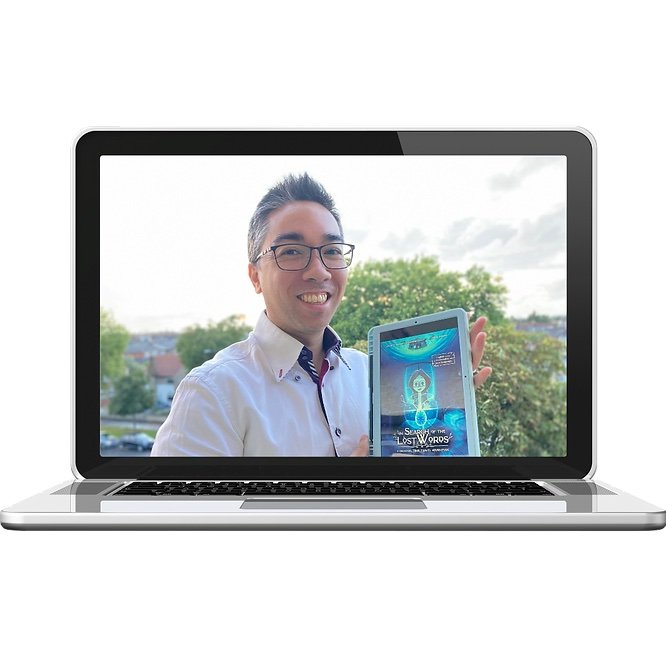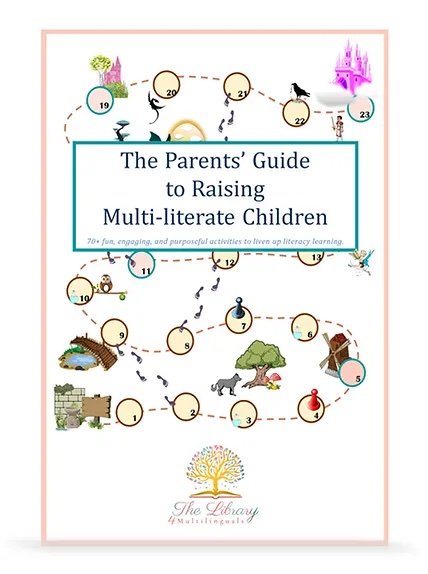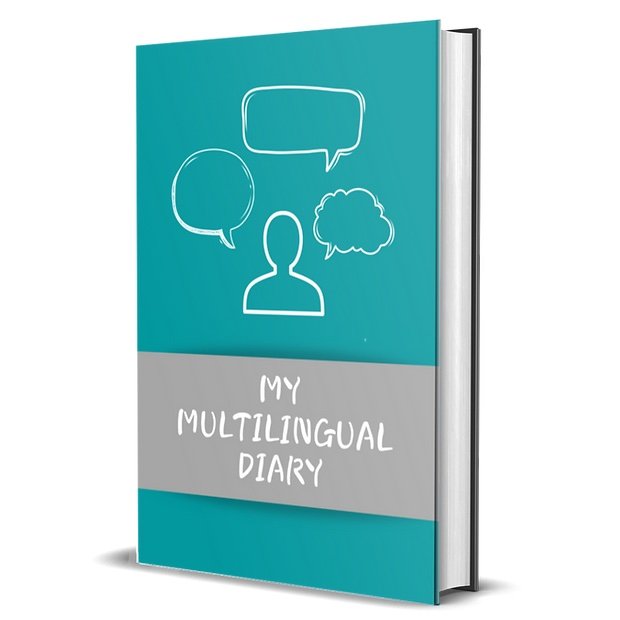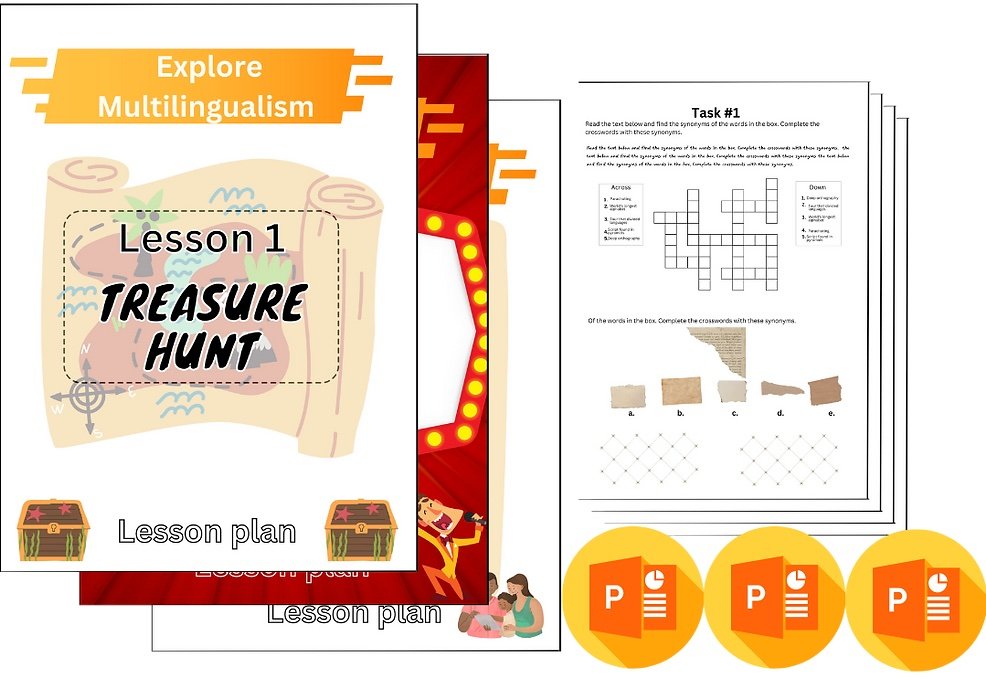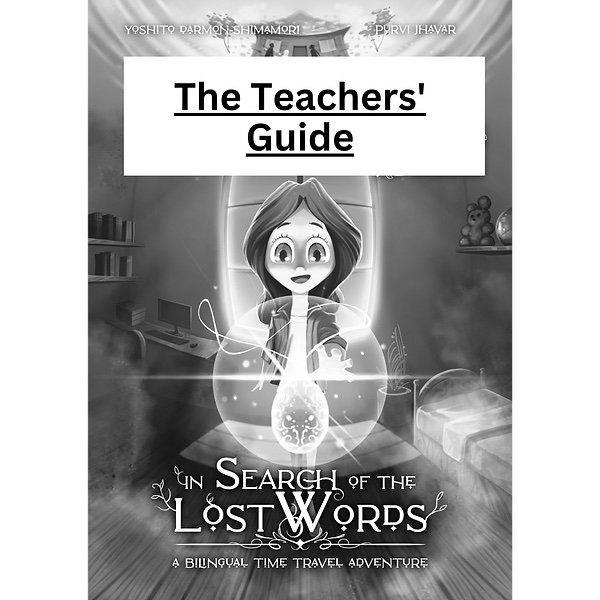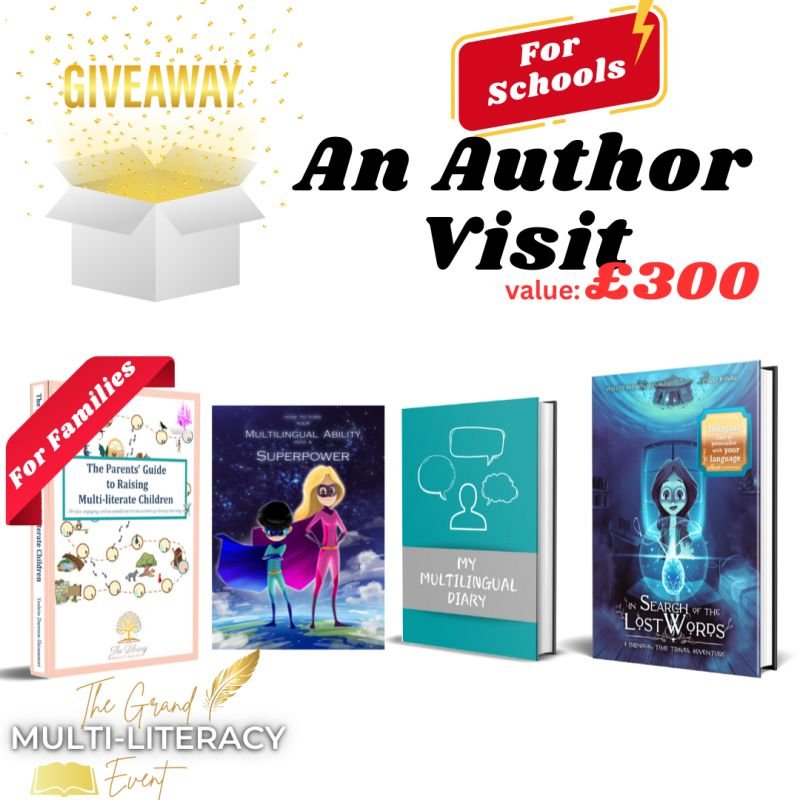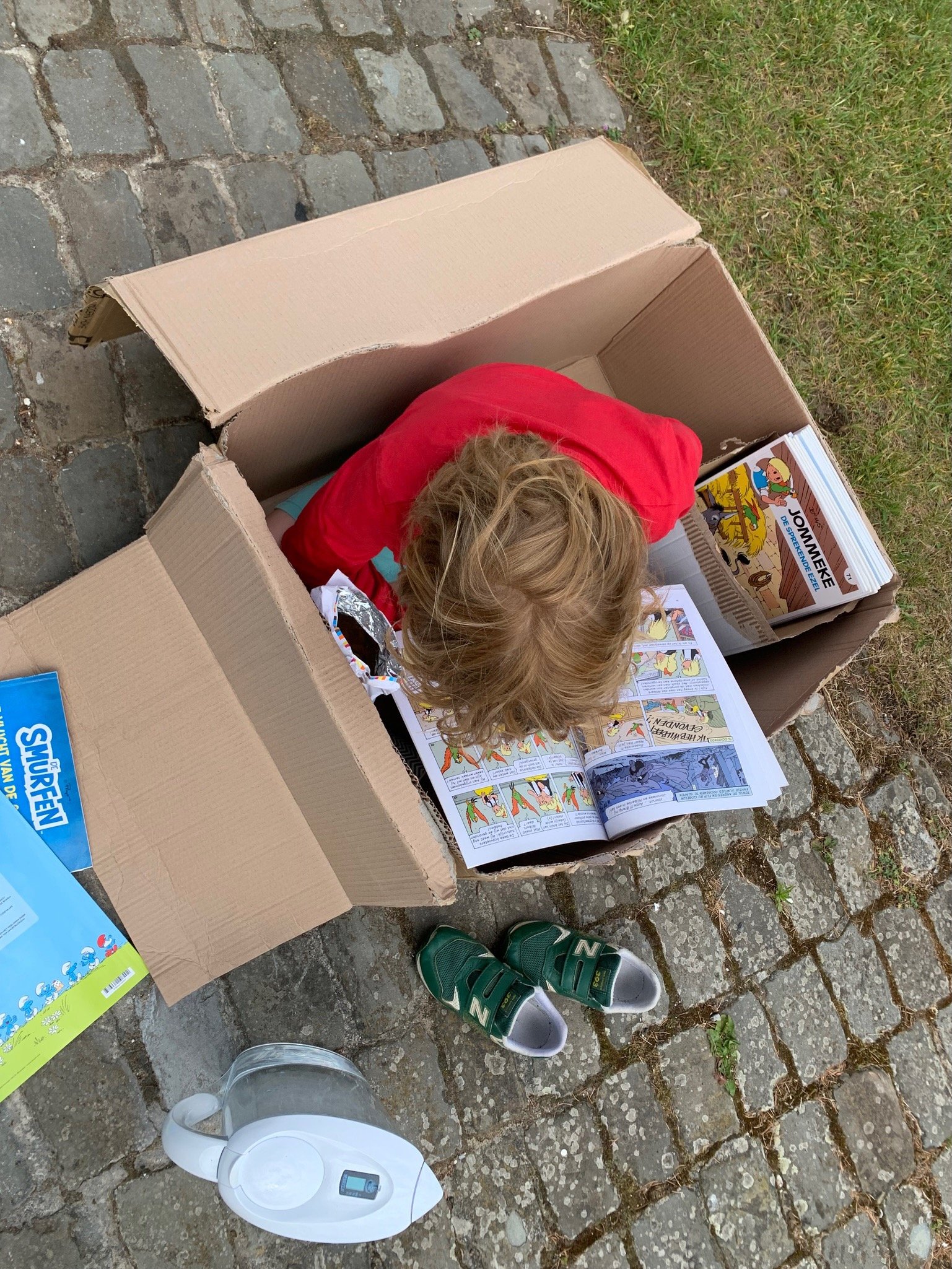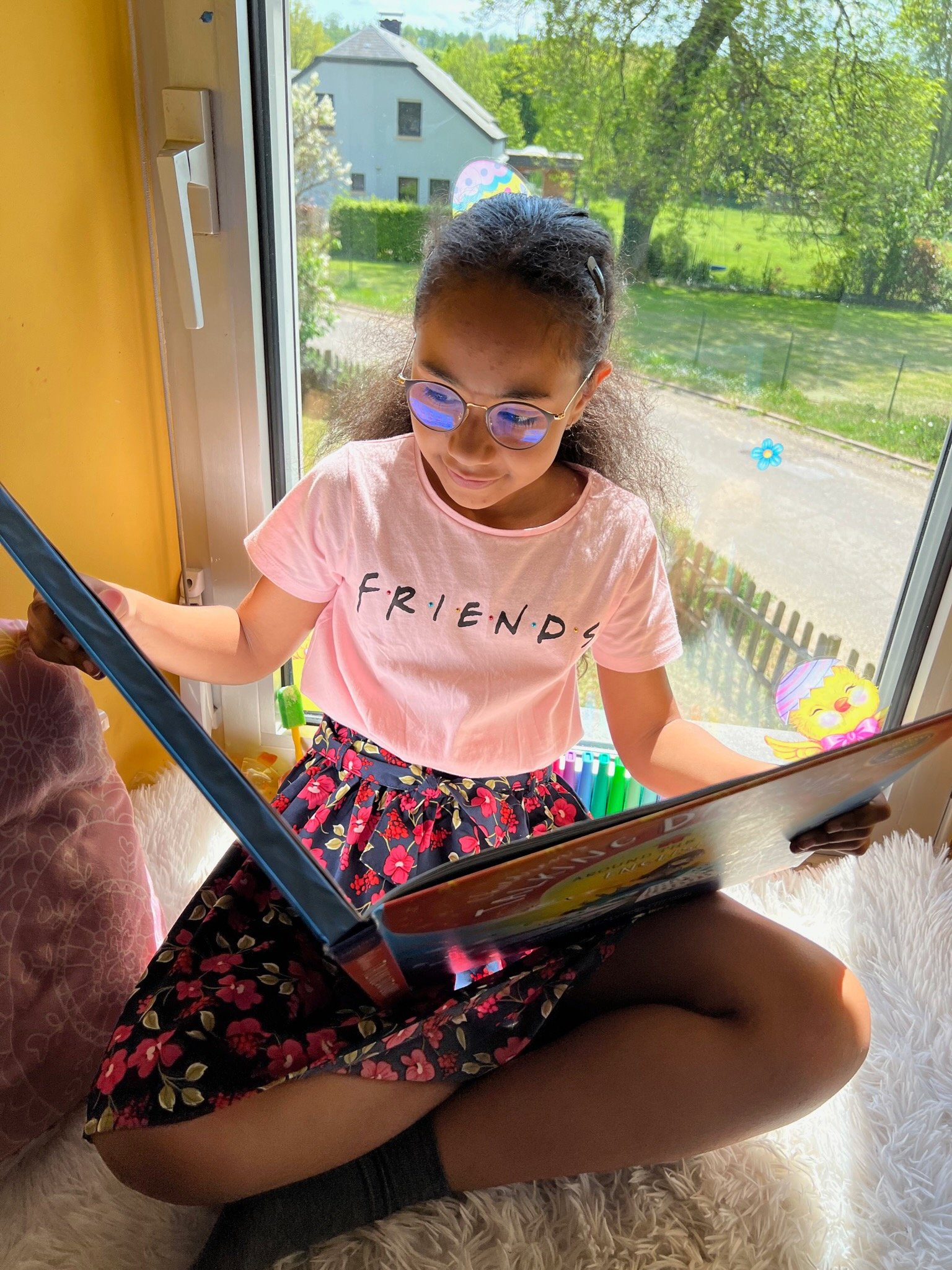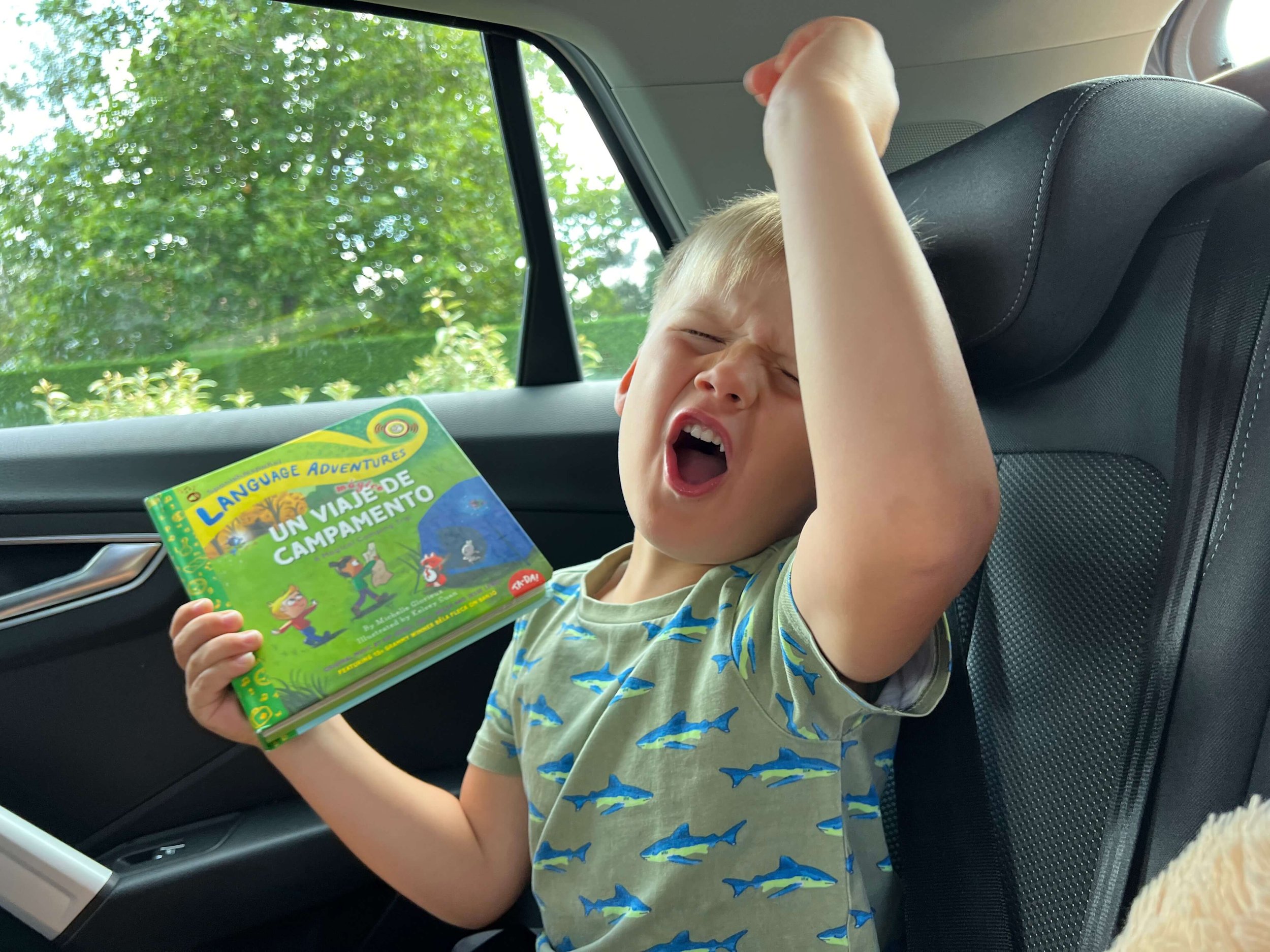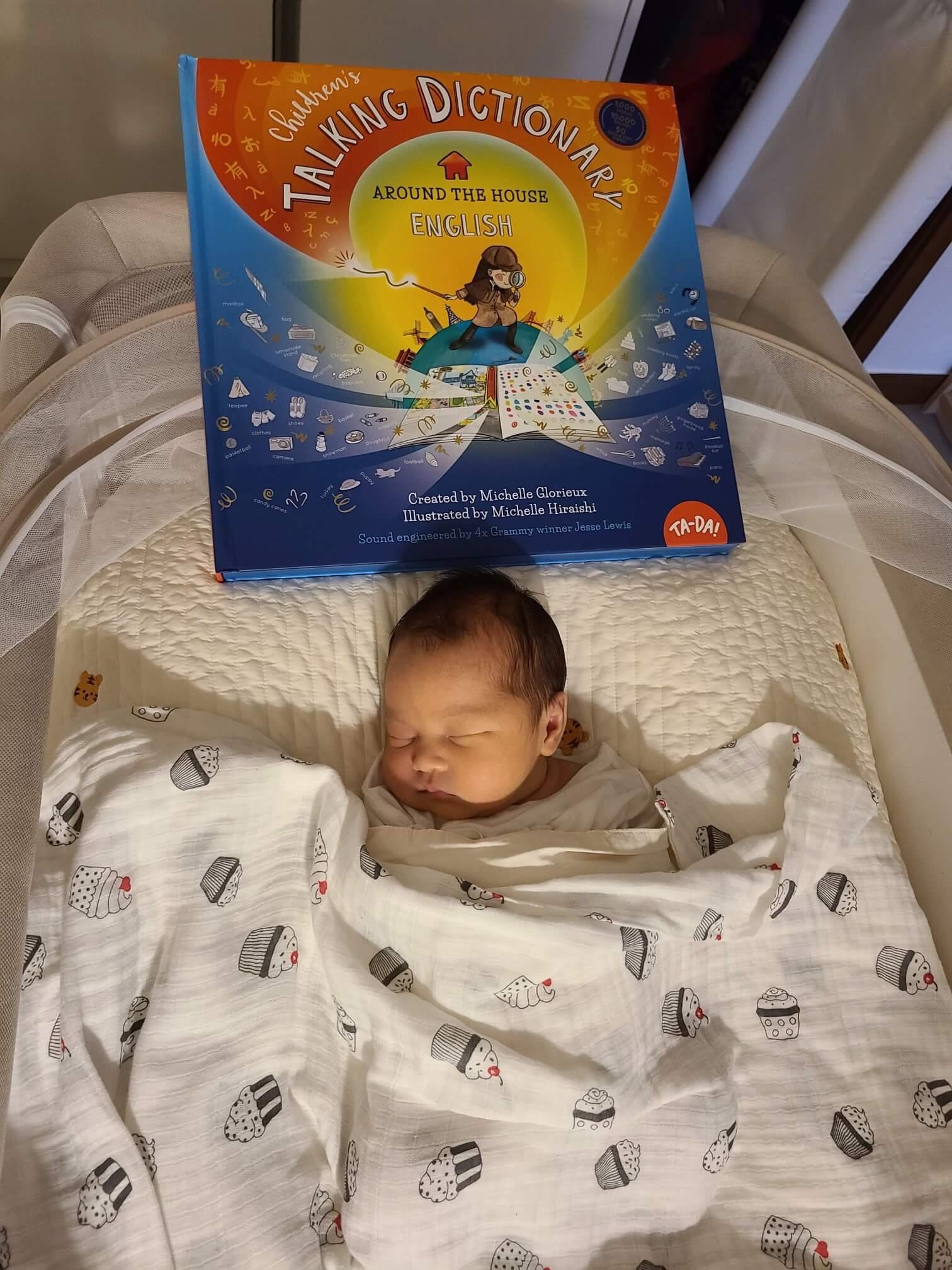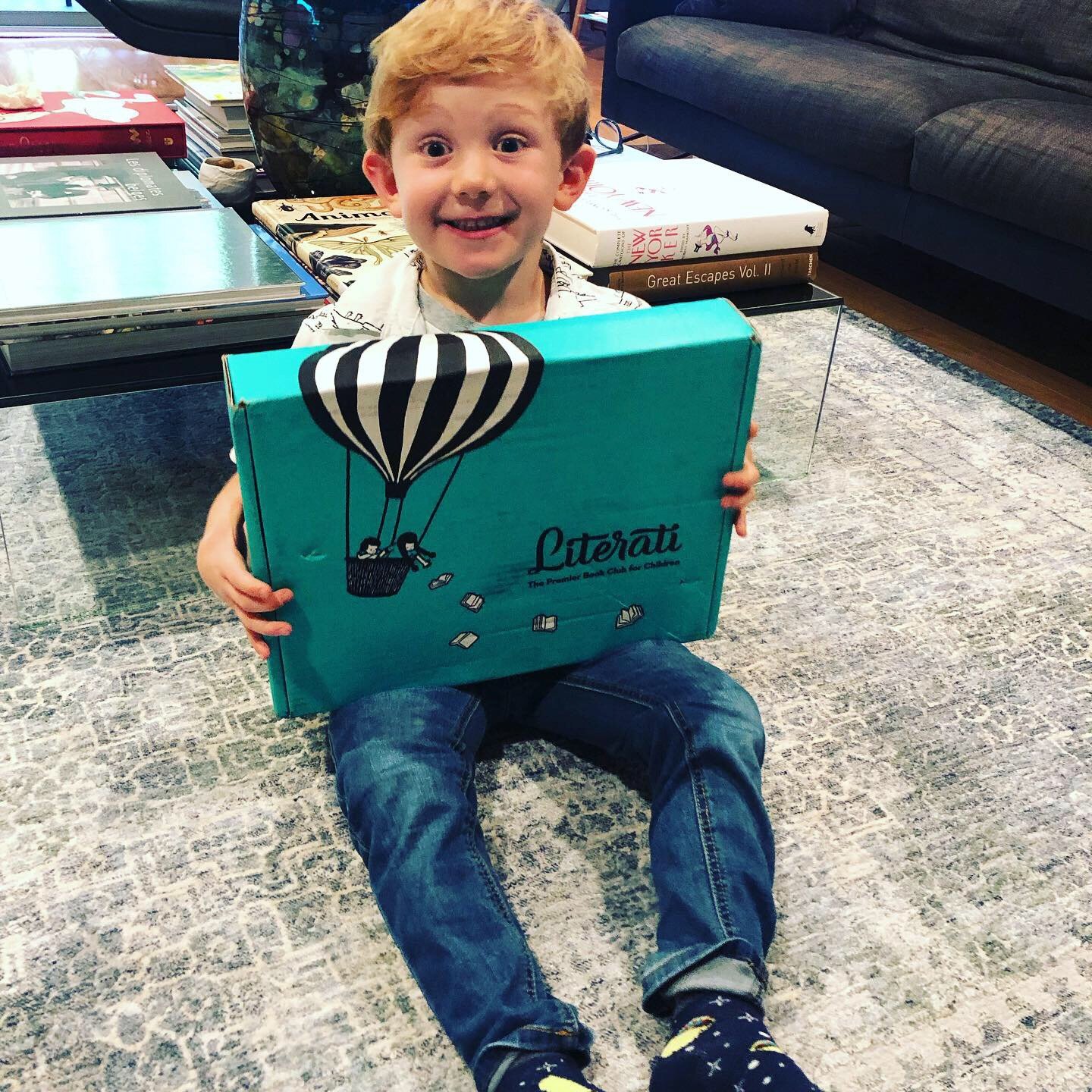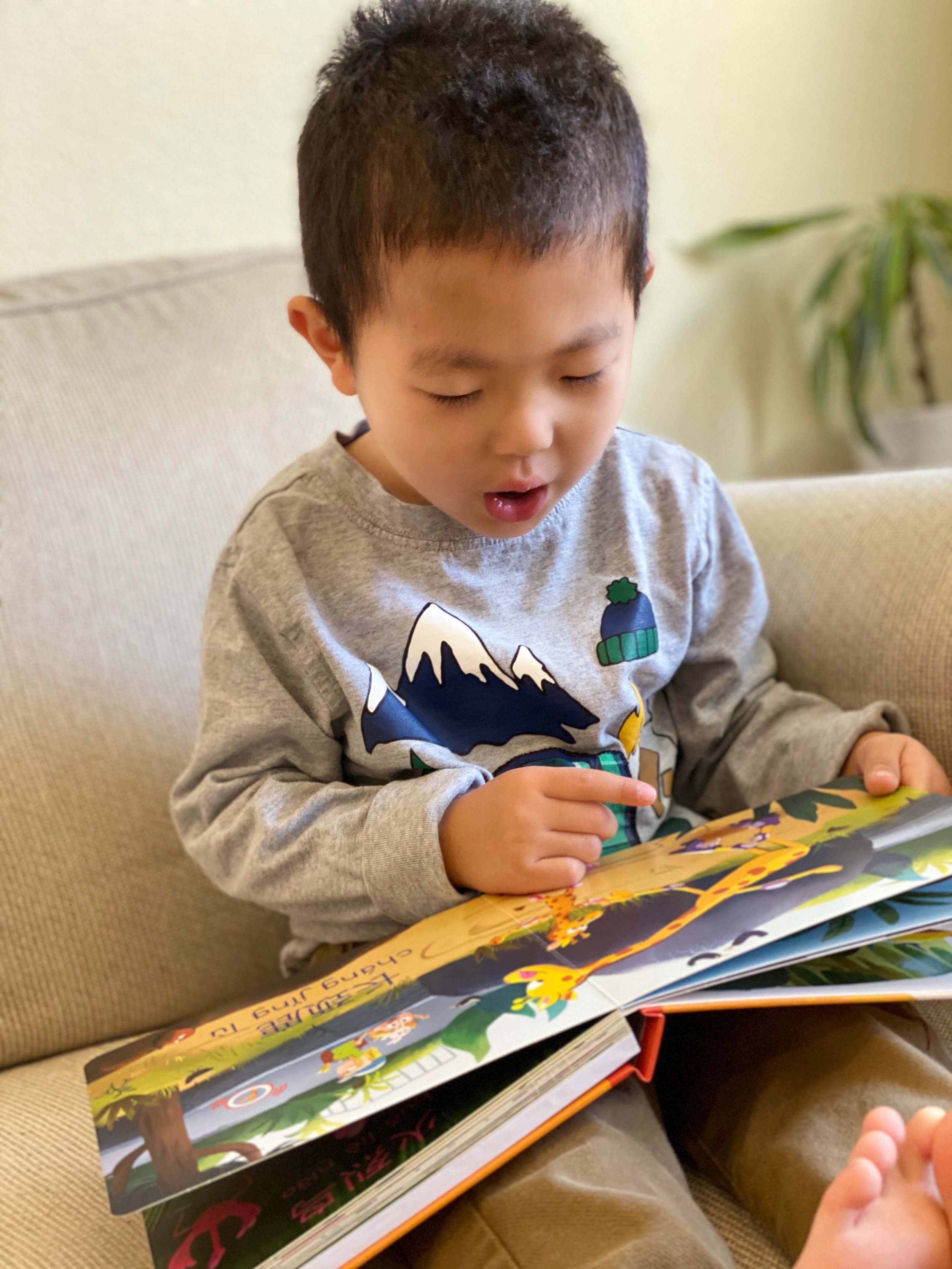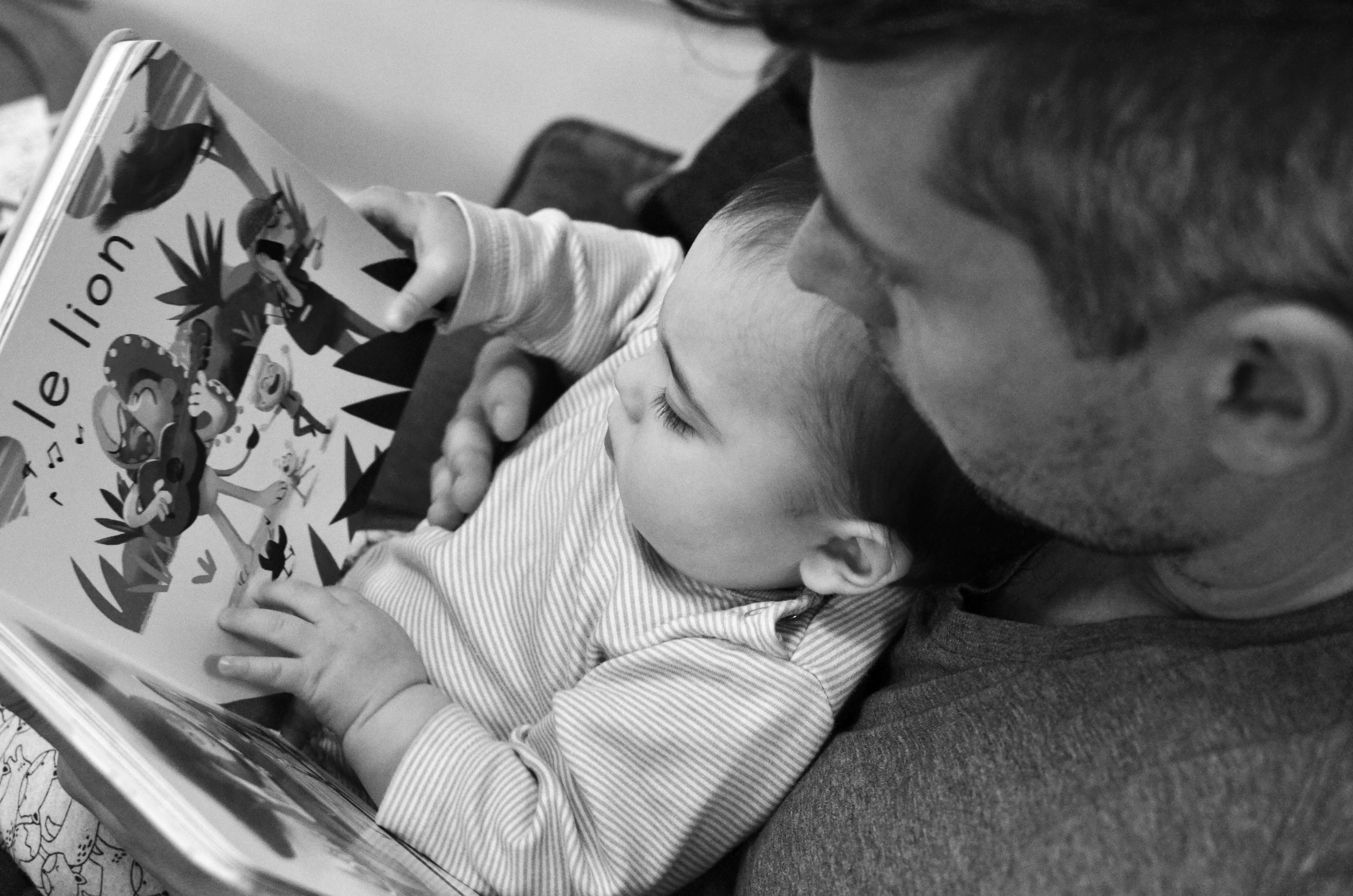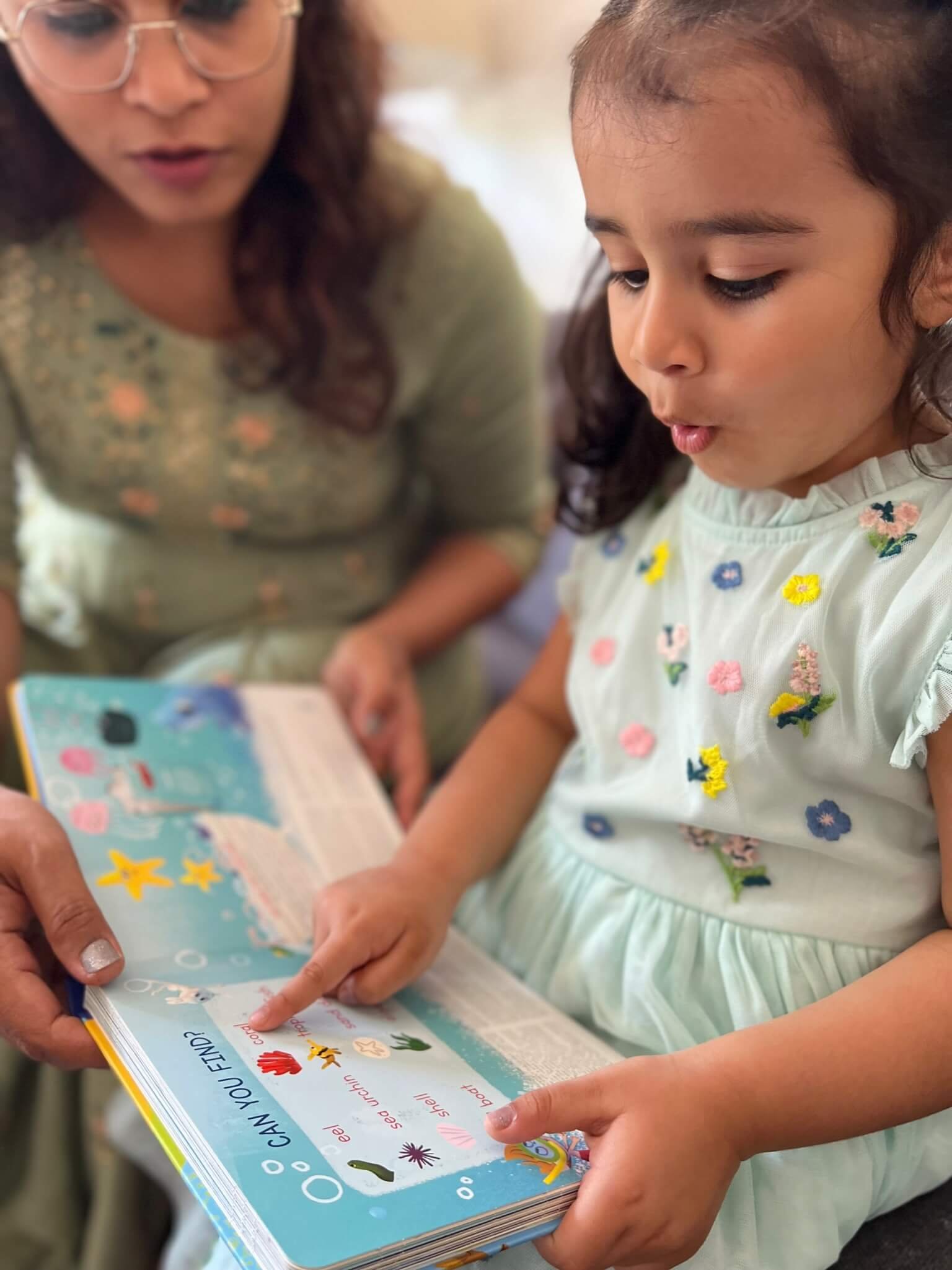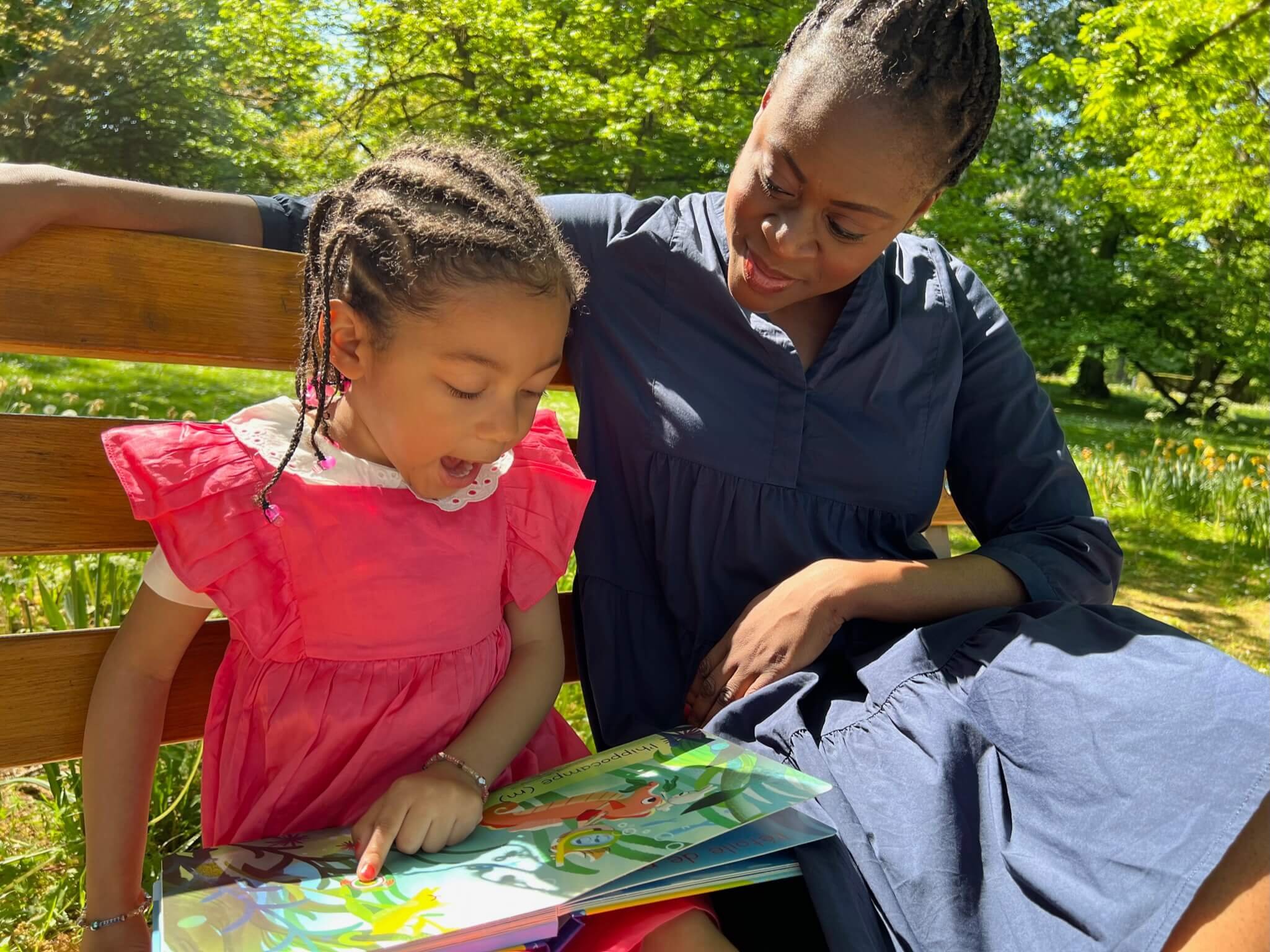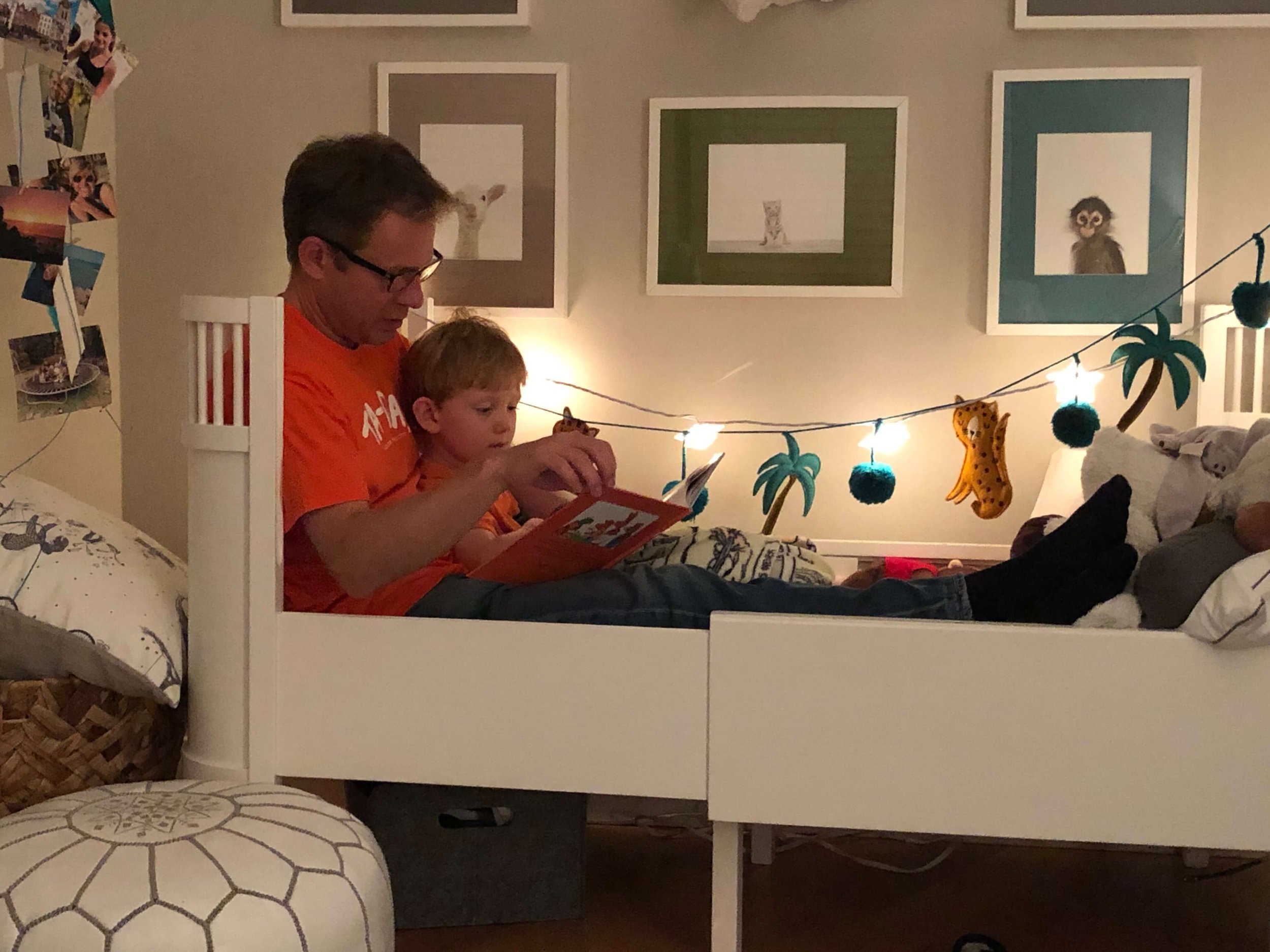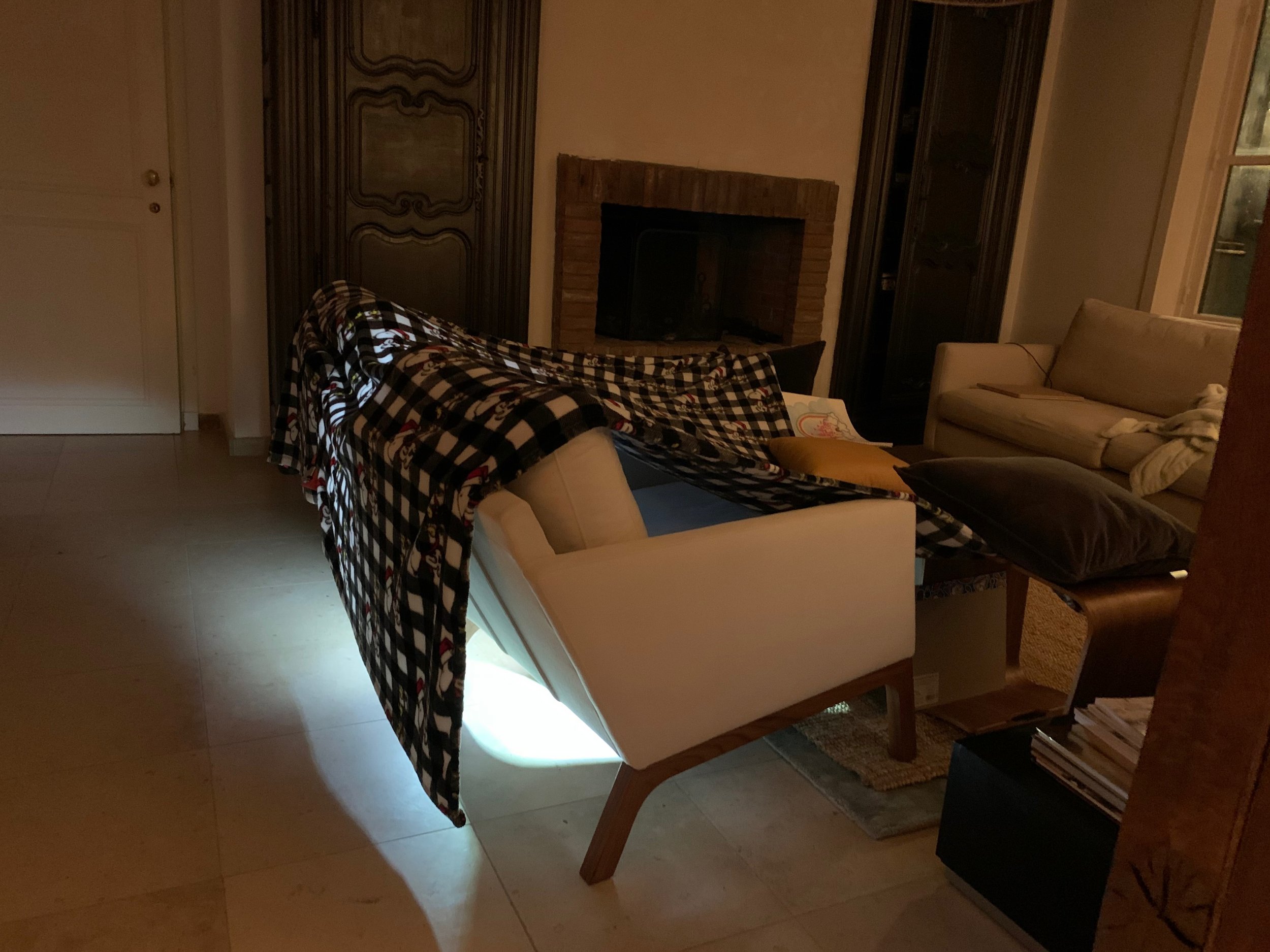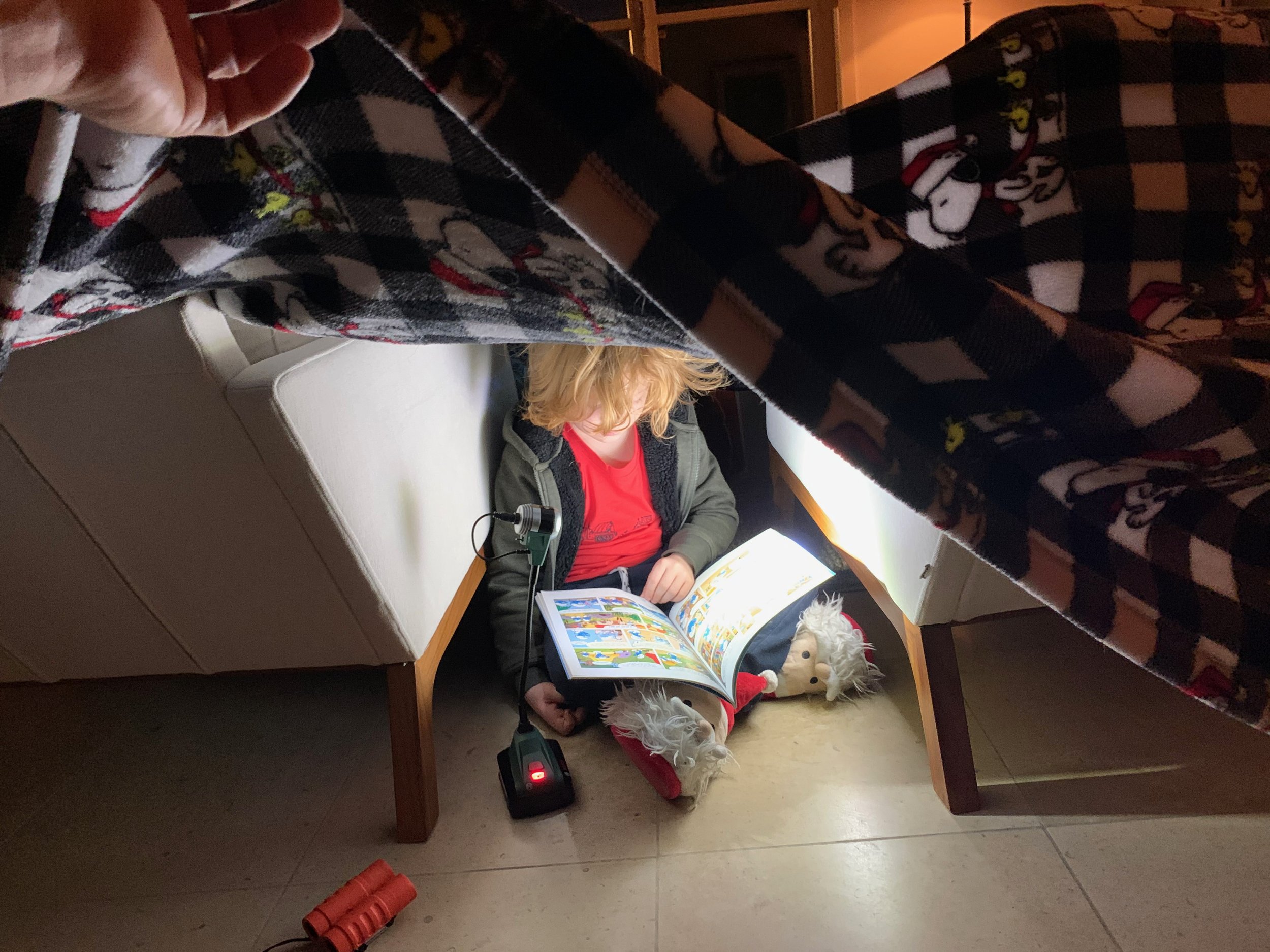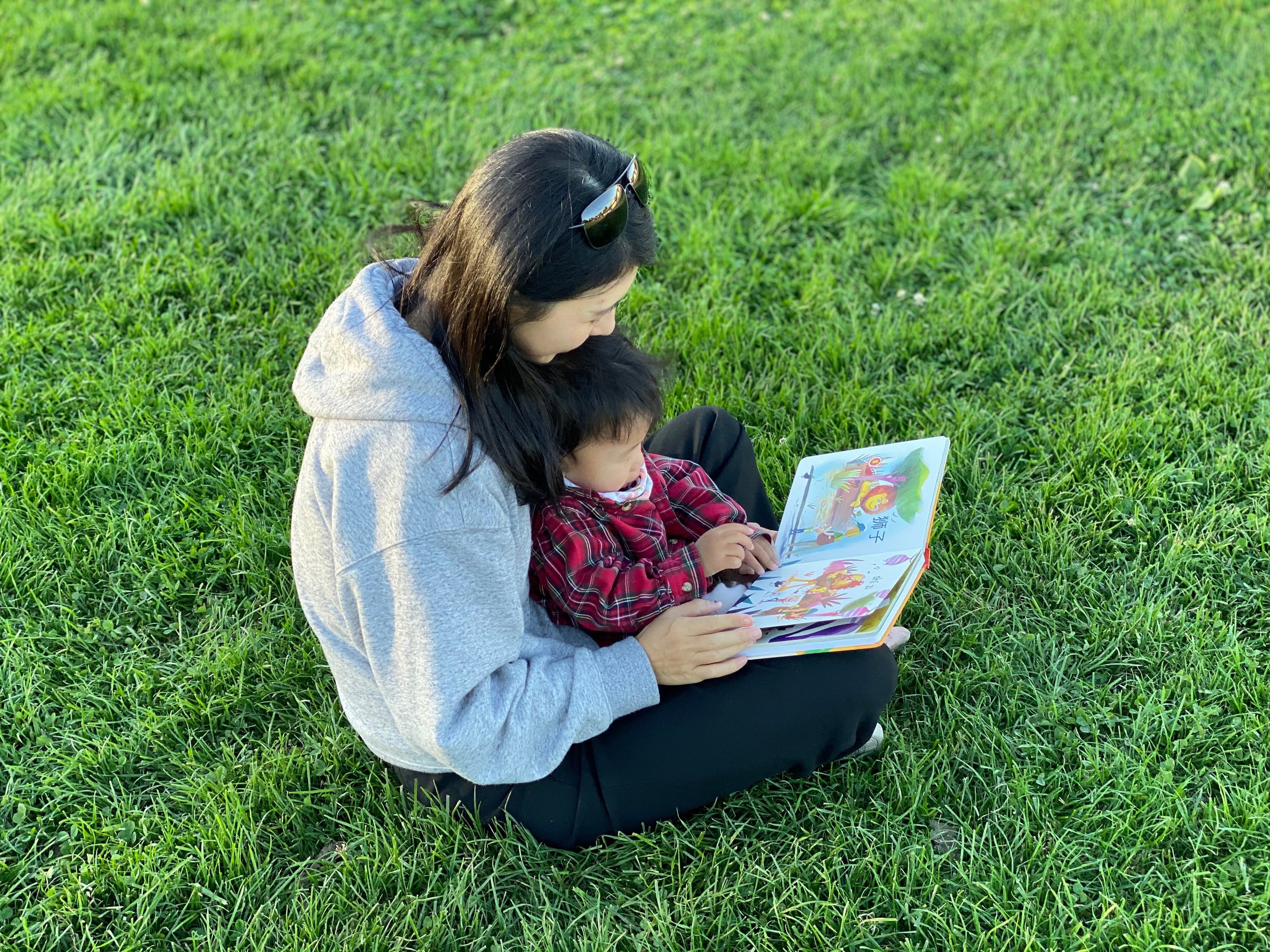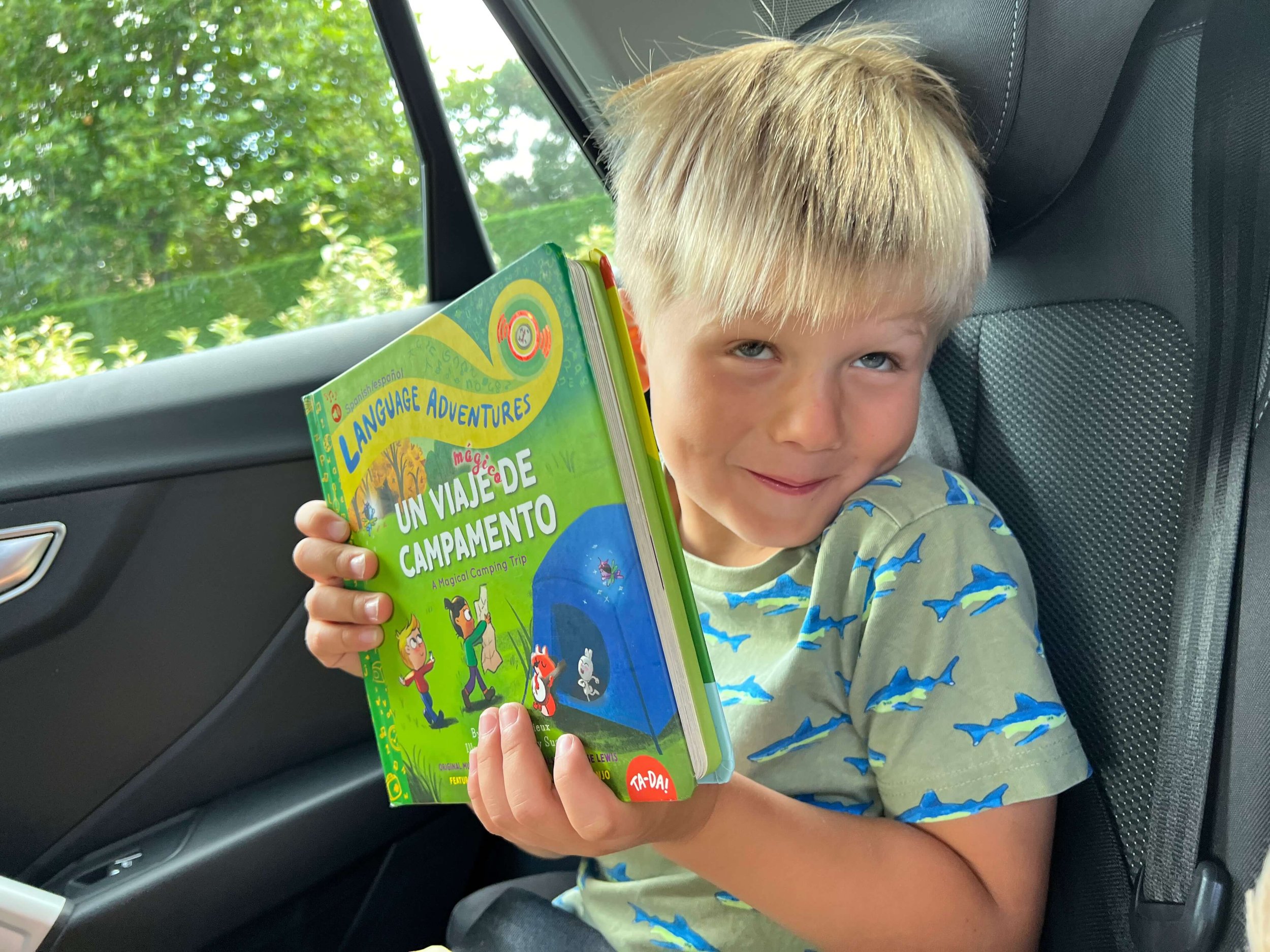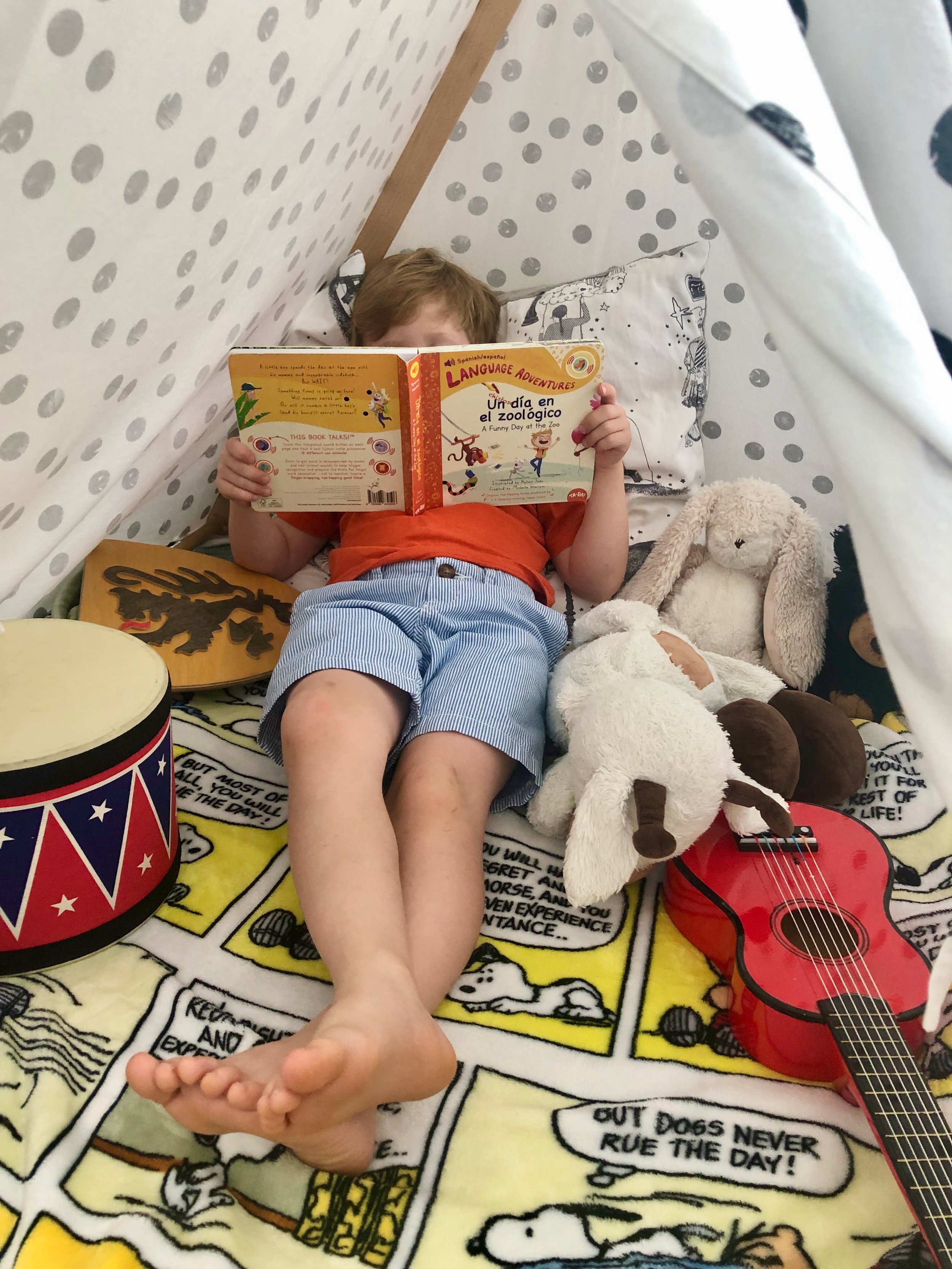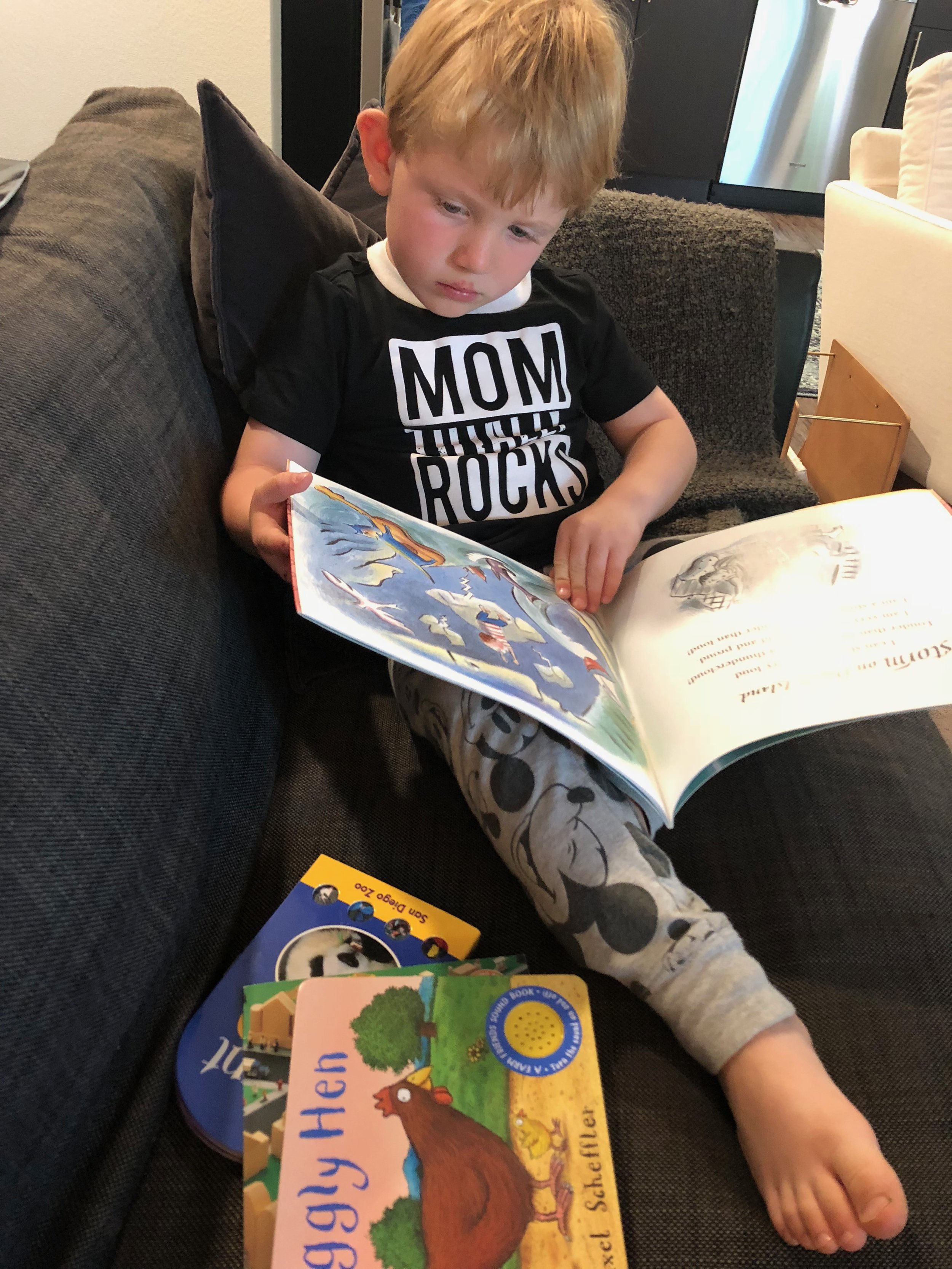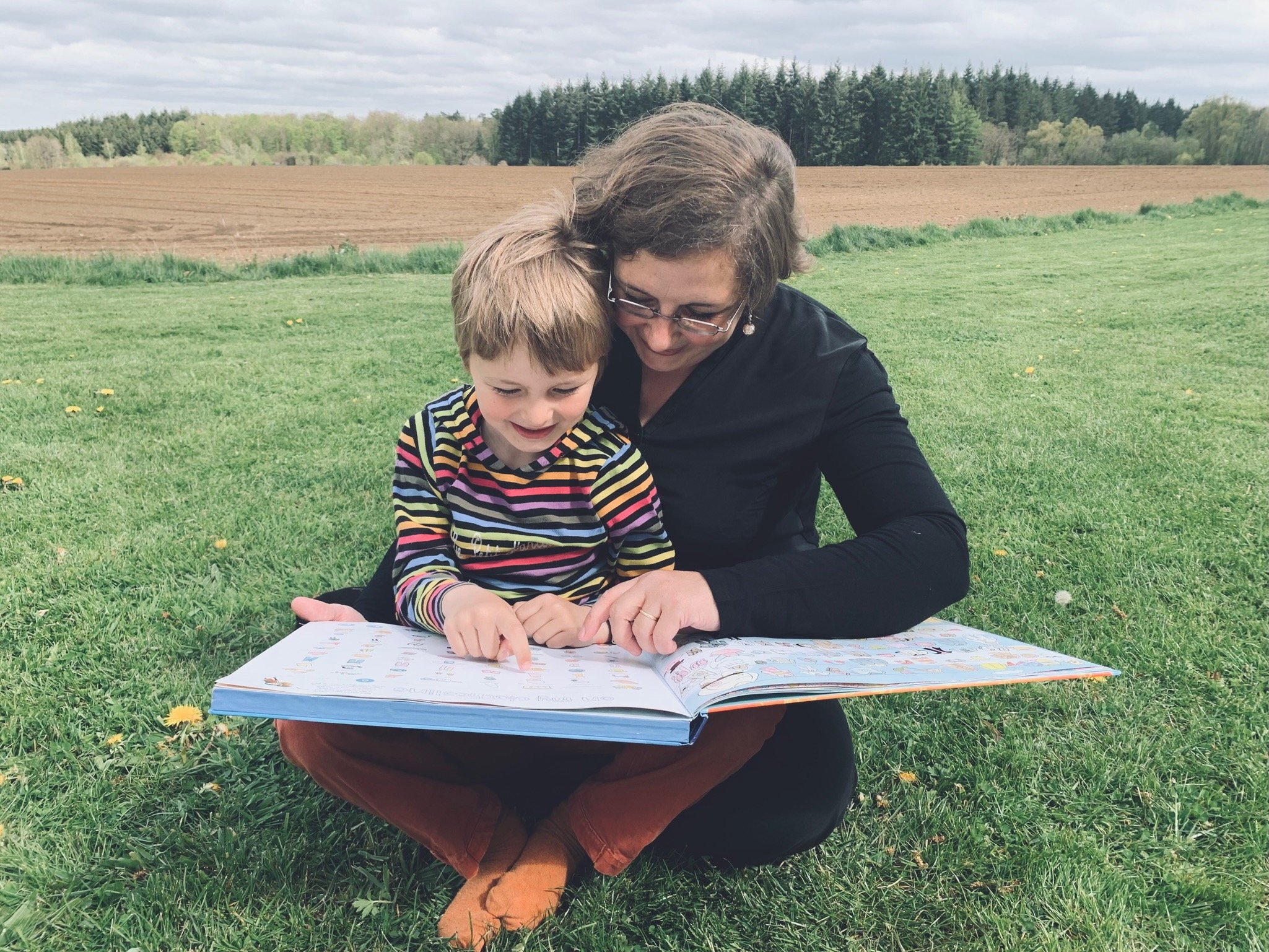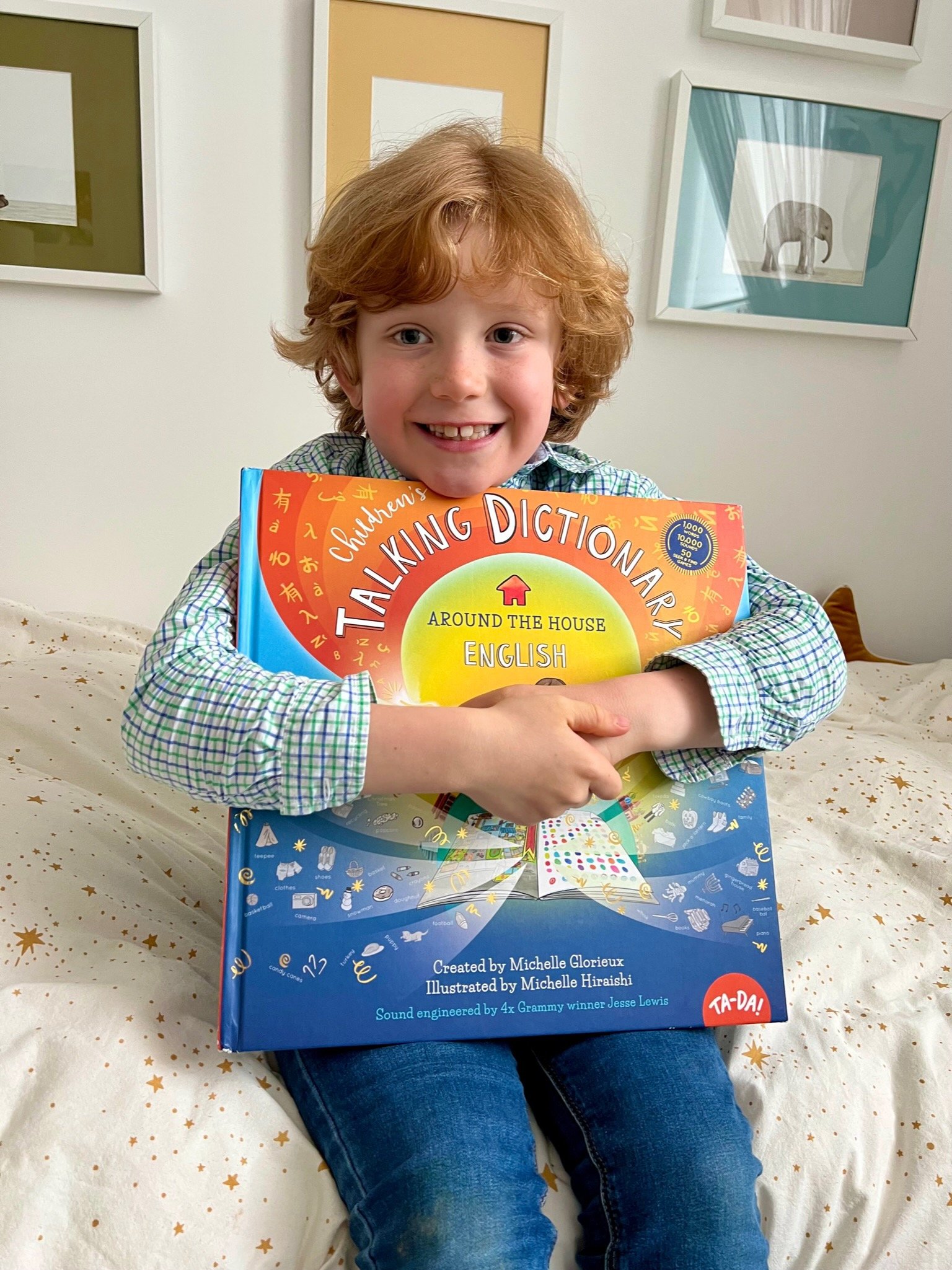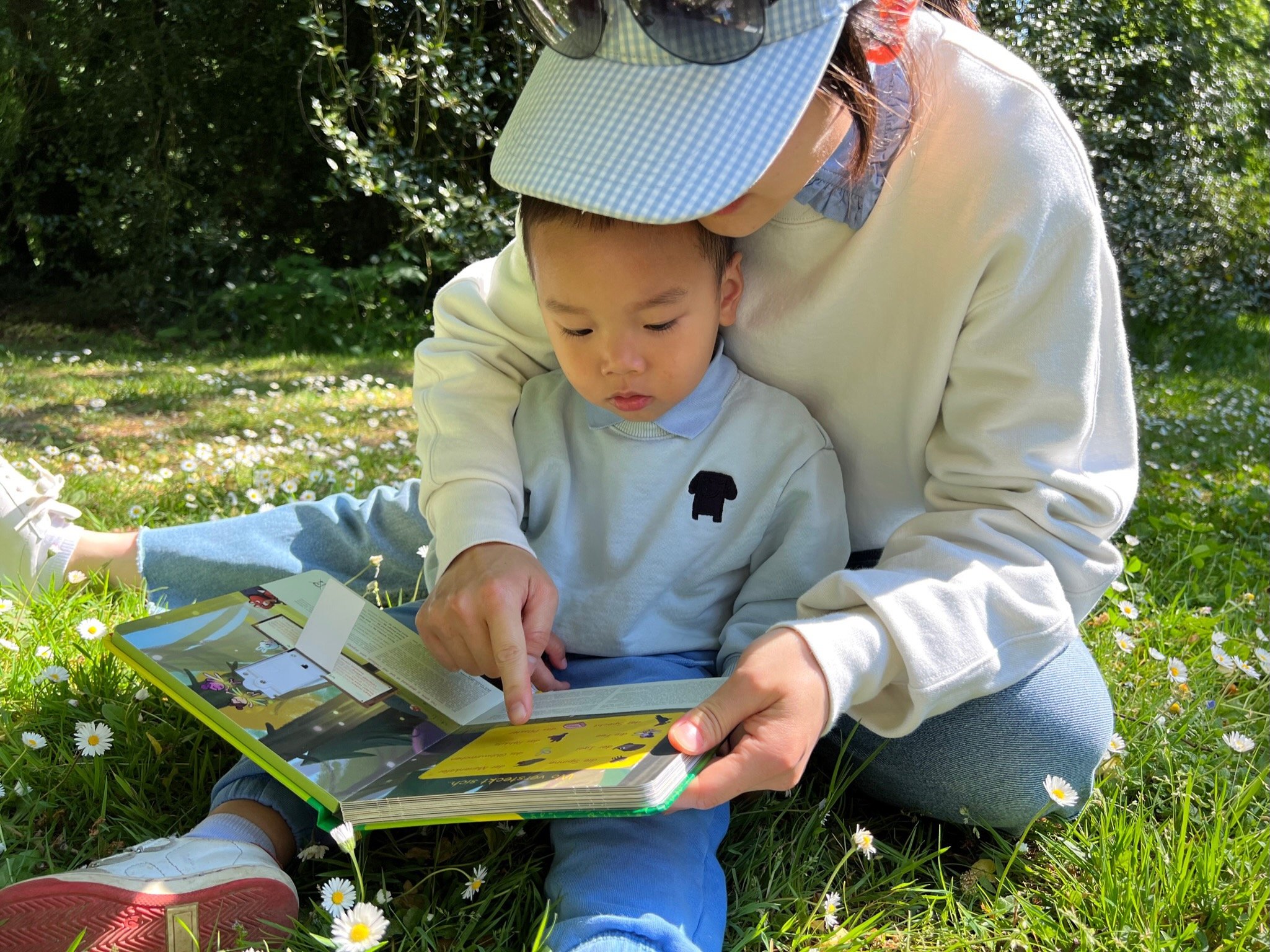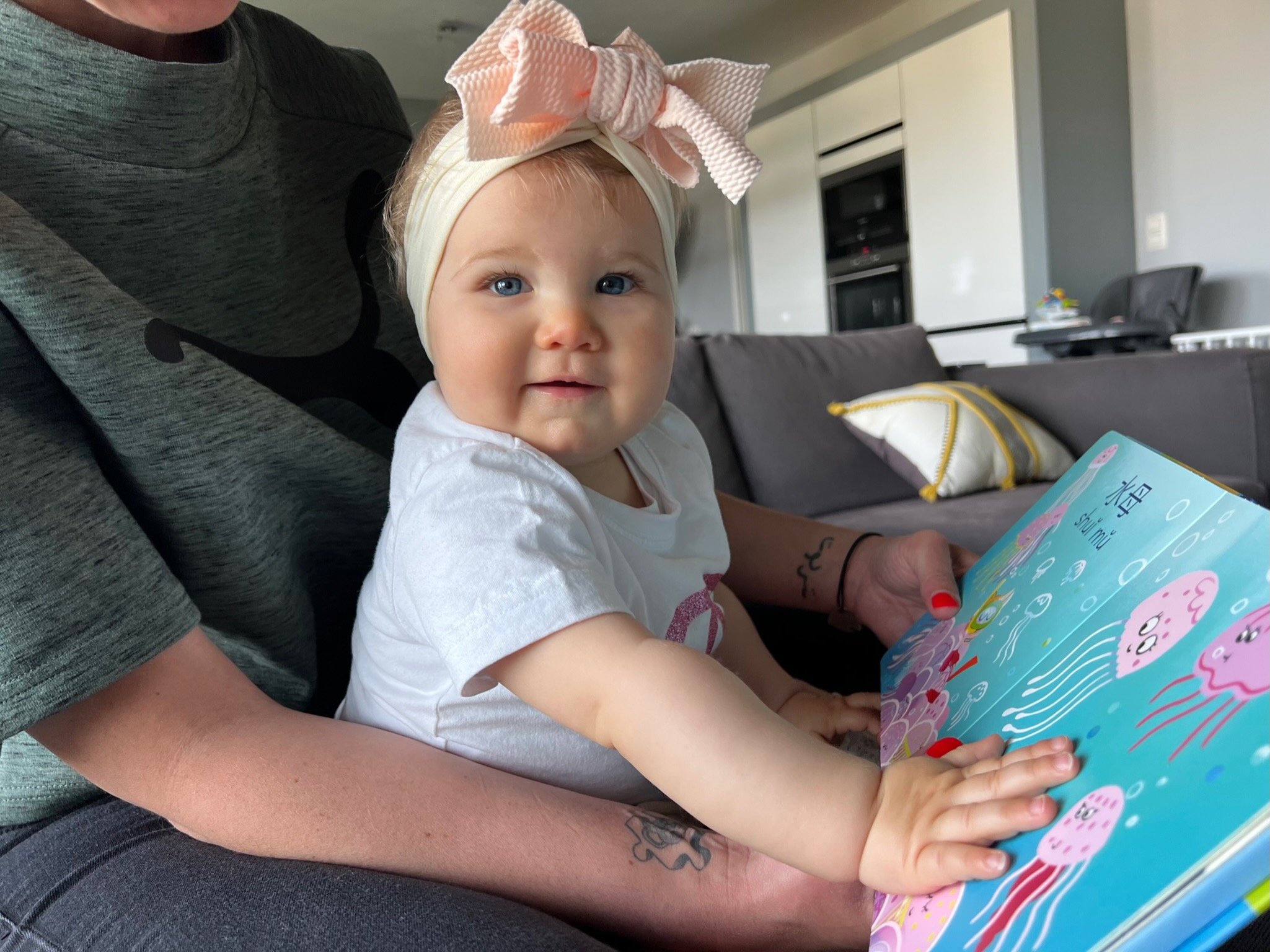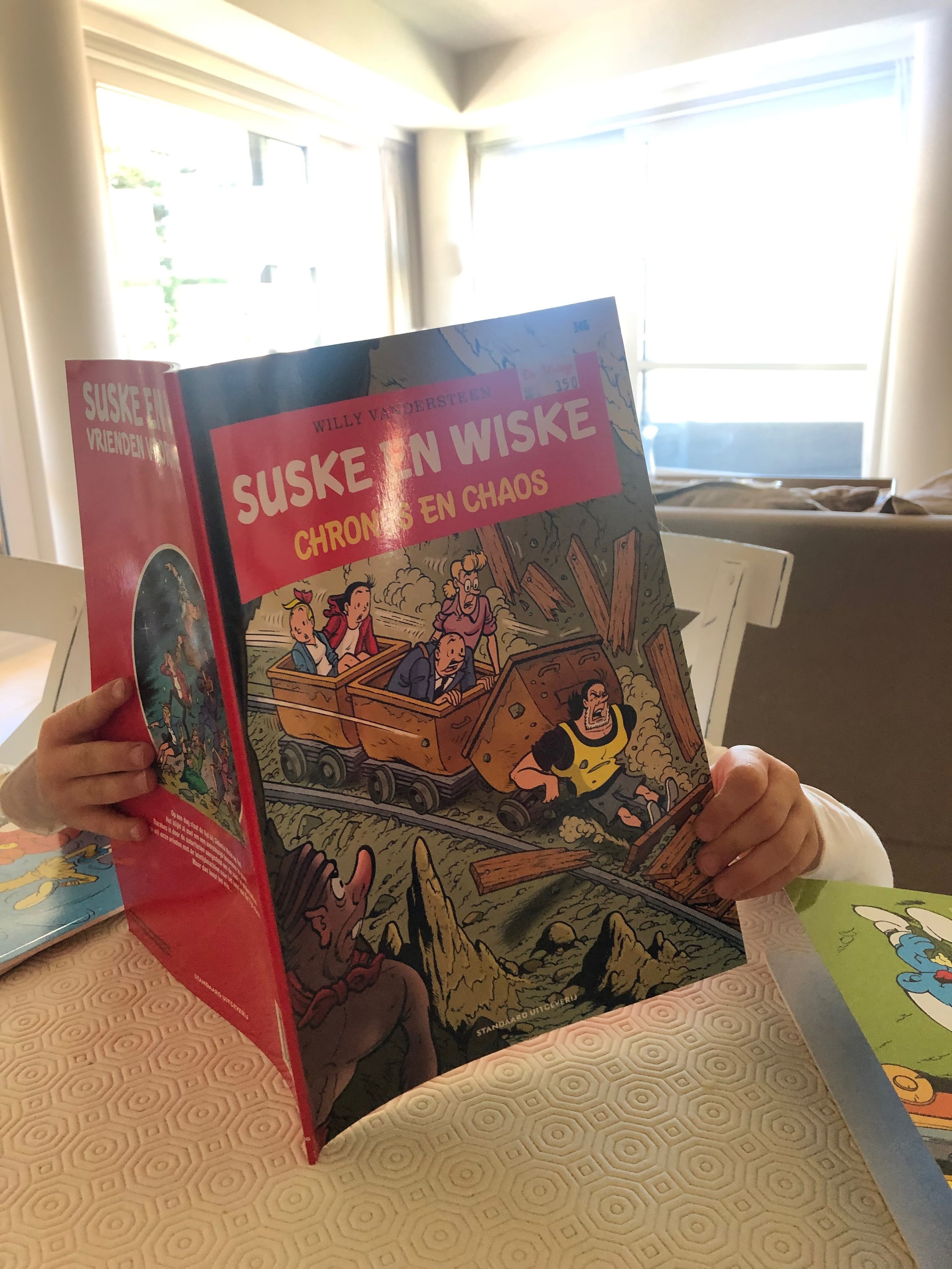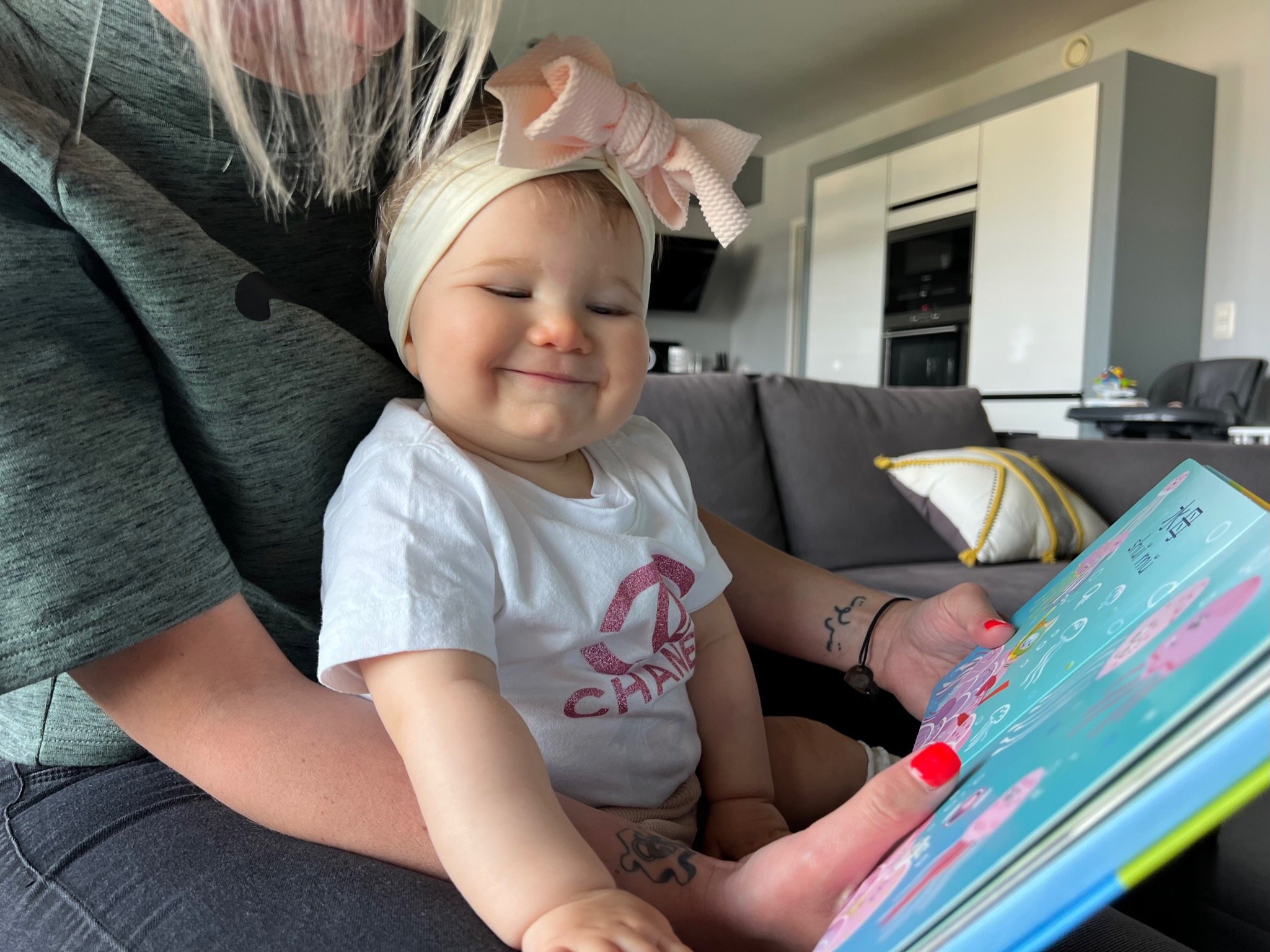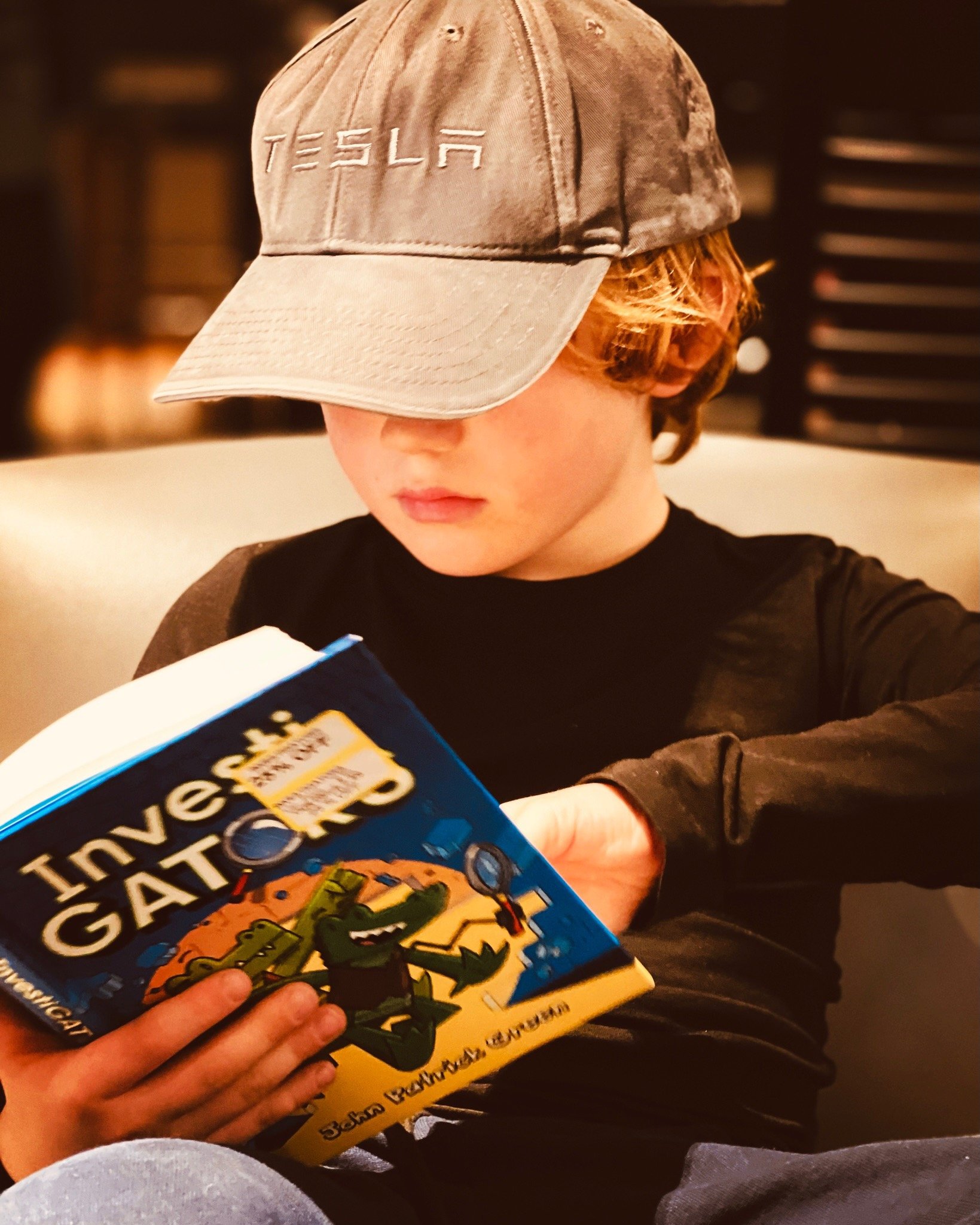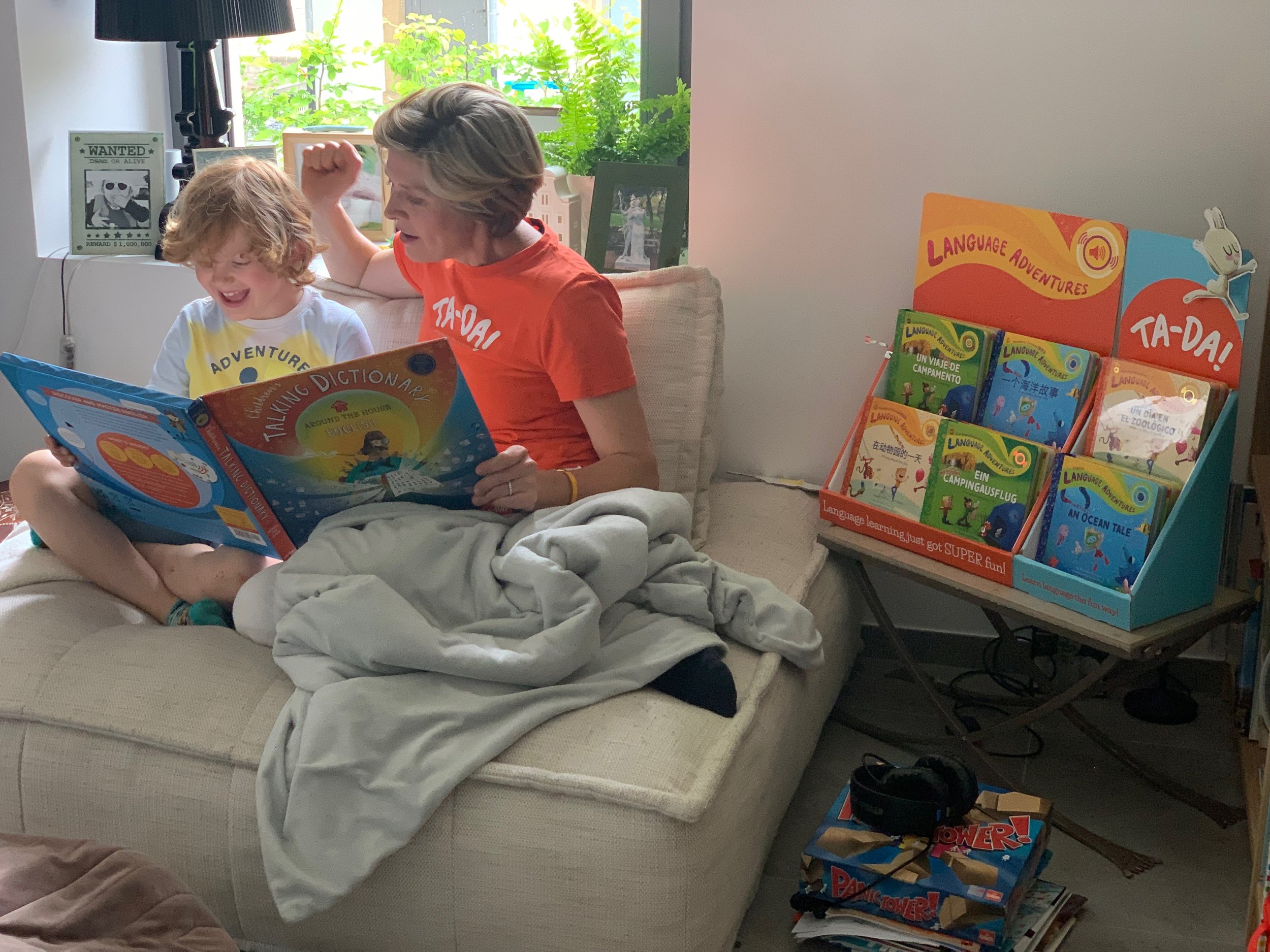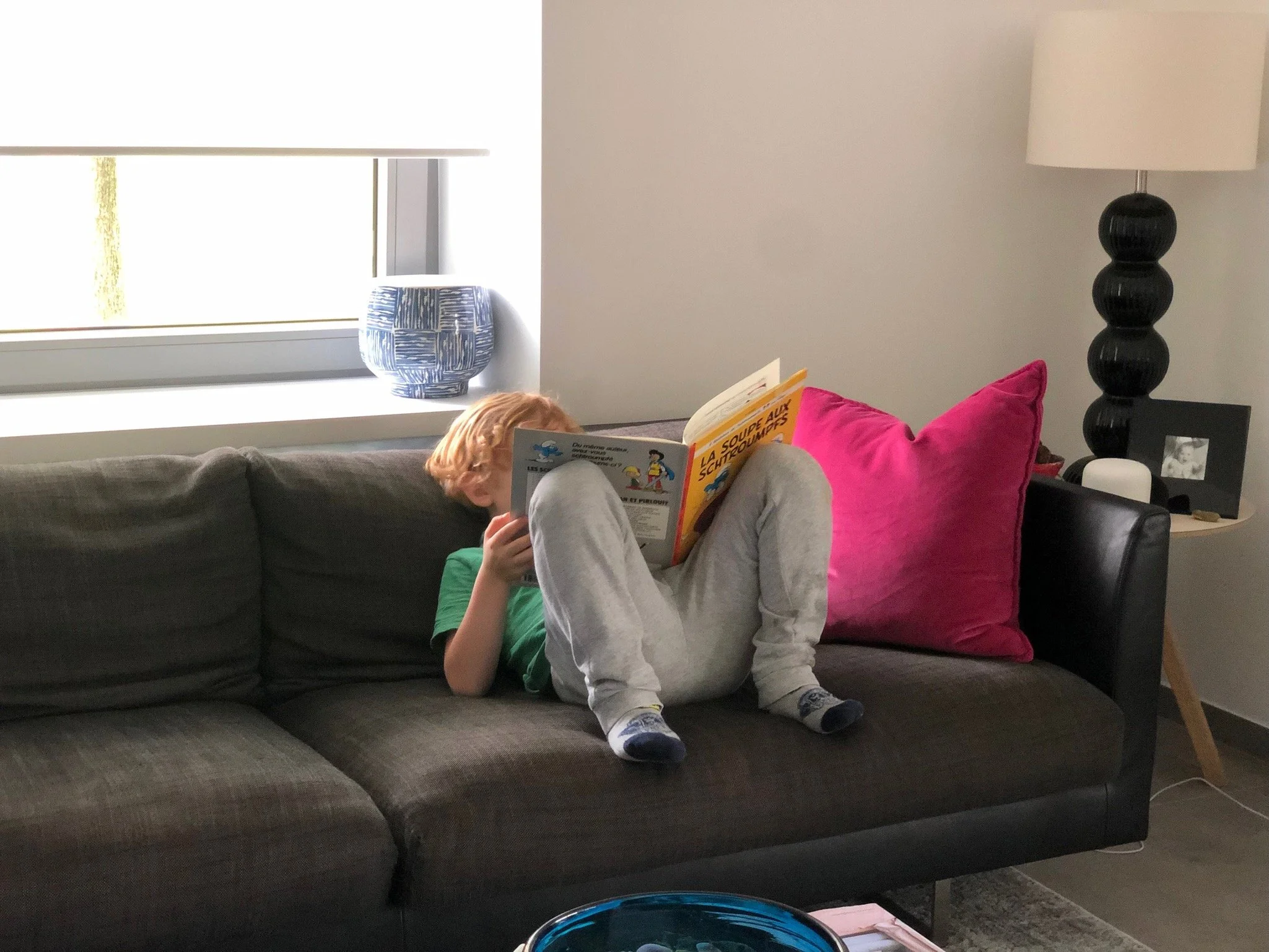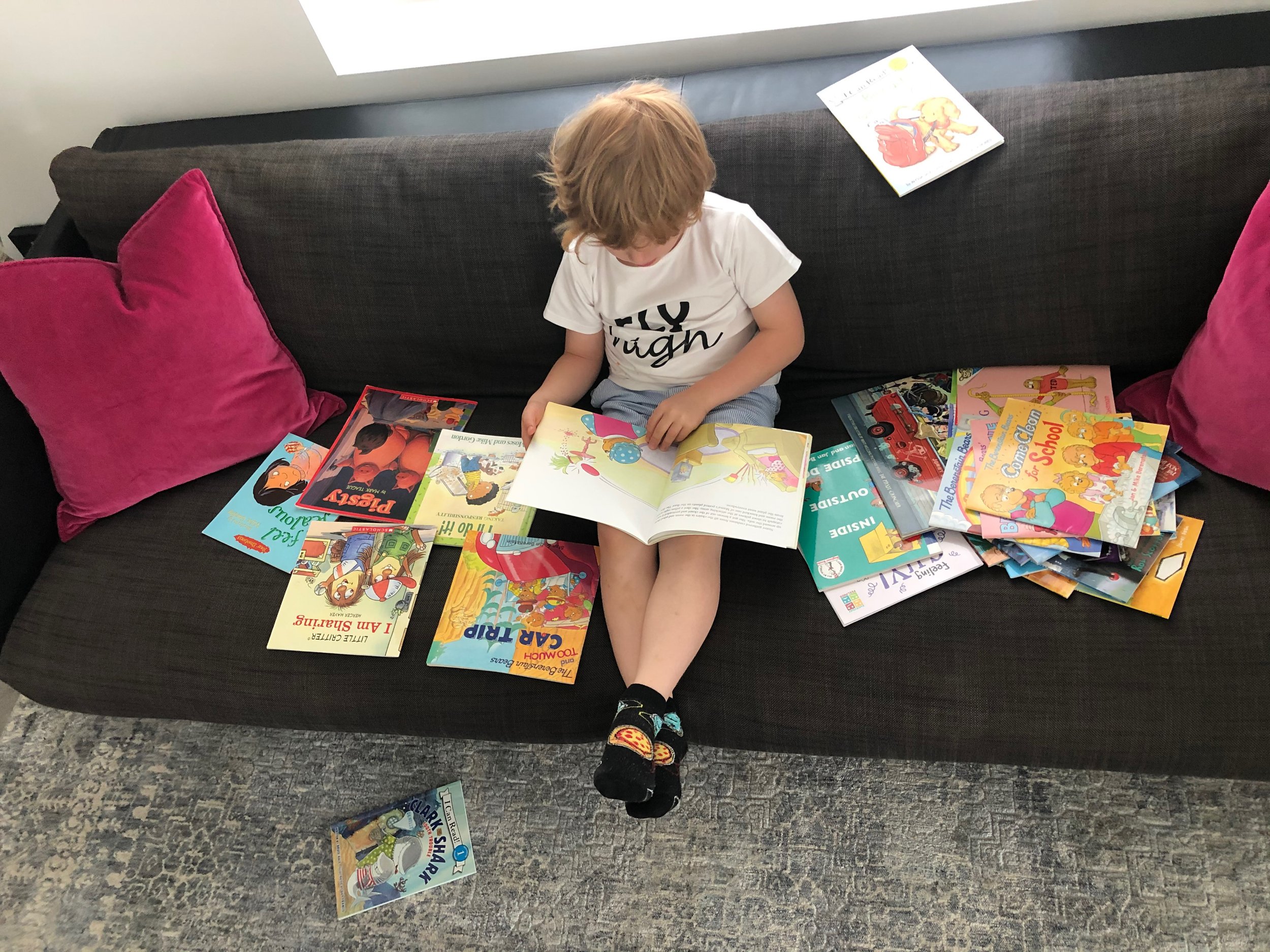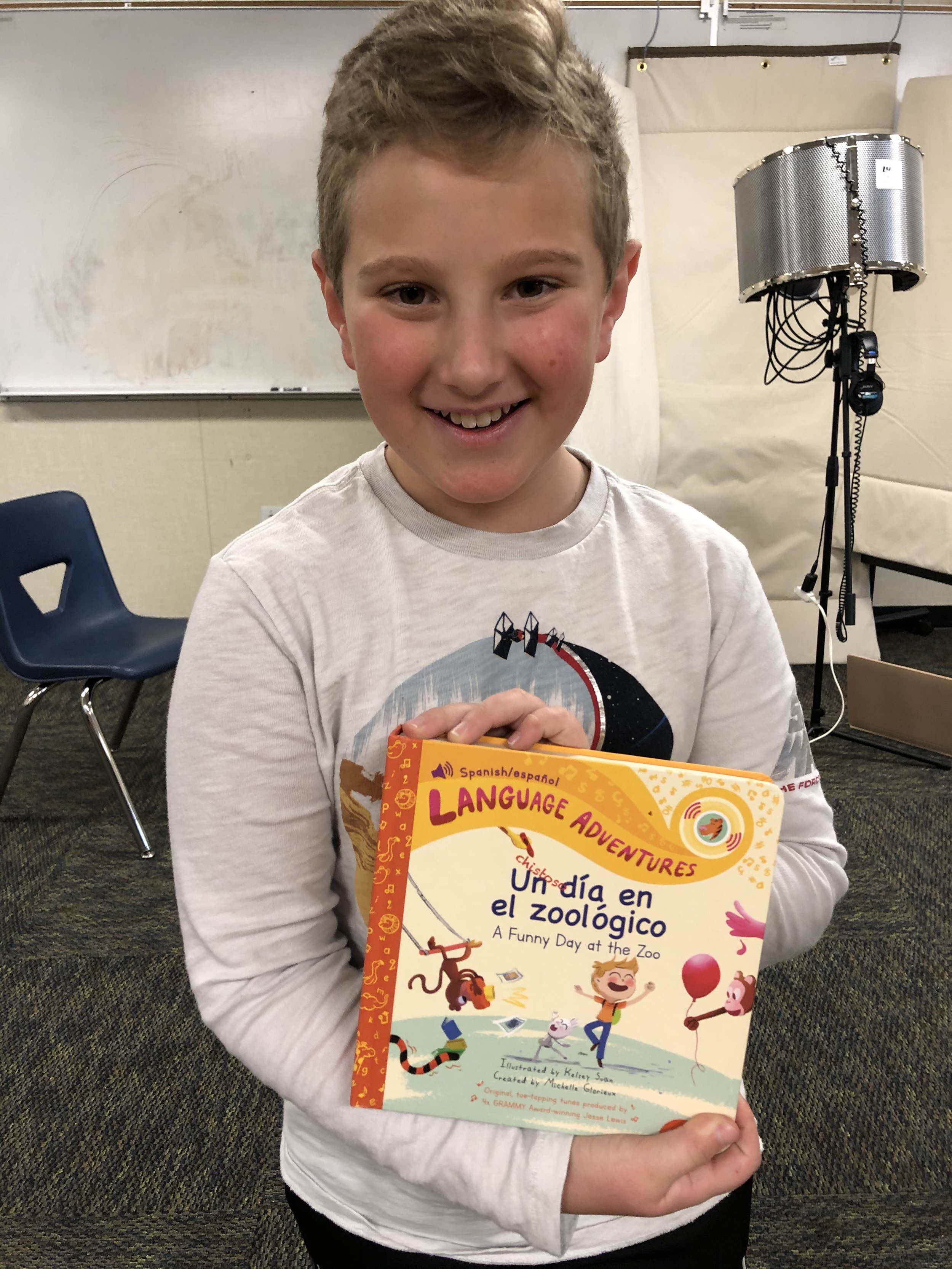A Focus on Multi-Literacy: Raising Readers in More Than One Language
The Beauty of Bilingual Blooms:
Nurturing Literacy Beyond Words
Introducing today’s guest blogger:
by Michelle Glorieux, Founder and CEO of TA-DA! Language Productions
Yesterday, on Day 3 of our 20-day blogathon, we delved into the intricate tapestry of bilingualism, focusing on shaping a foundation that resonates with the unique rhythm of every family. A key aspect of this journey is deciding the depth of fluency you're aiming for. Remember, language is a vast garden, offering more than just verbal blooms.
Take my husband. Though his native tongue is Flemish Dutch, his formal schooling in the language ceased (shifting to French), when he was a mere twelve. Consequently, despite Dutch being his first language, his writing aptitude in Dutch mirrors that of a 6th grader (in American education terms). This anecdote is not just a reflection of his personal journey, but a larger testament to the multifaceted nature of language learning.
Speaking, understanding, reading, writing - every facet needs its nourishment.
Igniting Imagination: Blooms of Knowledge by Michelle Hiraishi
Books, I believe, are the sunlight that fuels this garden.
They've marked their presence in every corner of my home, whispering stories in every nook and cranny. Through three international relocations in just two years, our expansive collection of books was non-negotiable cargo. They are hands-down the best and most functional way to surround a family in the words, thoughts, and dynamic culture of their contents.
This brings me to today's blog by the inspiring Yoshito Darmon-Shimamori. As a father nurturing his two trilingual sons, a dedicated foreign languages teacher, and a staunch advocate for multilingualism and multilingual literacy, Yoshito embodies passion.
His endeavor, the Library4Multilinguals, was birthed with the vision to make a child’s journey through multiple languages not just educational, but utterly enjoyable, which if you know me by now, you must know how much I admire that.
Through his writings, he seeks to empower, to make reading and writing in the home language not an obligation, but a delightful adventure.
Yoshito's wisdom brightens the bilingual+ path beyond mere words, highlighting the nuances and underlying messages that form the soul of a language. His insights remind us that for our children to be truly multi-literate, if I may use the analogy from yesterday’s blog, they must, ‘plunge beneath the surface’, diving into the deeper oceans of meaning.
With at least 95% comprehensible input being the key, Yoshito champions the idea that becoming multilingual isn't just about recognizing words, but truly understanding them.
Day 4: The Essentials of Multi-Literacy Explained.
Join us today, as we unravel this compelling narrative on raising multi-literate children, thoughtfully penned by Yoshito.
Understanding the Foundations of Reading
by TA-DA! extra-special guest contributor, multi-literacy expert, Yoshito Darmon-Shimamori
https://www.library4multilinguals.com
Interwoven Threads: The Fabric of Language Comprehension.
When we think about teaching our children to read, we often wonder how we can teach them to recognise the letters or characters of our written language. Of course, this is key, but it is only part of the equation.
As the image at right shows, there are many components/strands that are woven into skilled reading.
Today, in this post, I will talk about the “Language comprehension” that often weighs a lot more in the balance than we believe.
I will first explain the different components of the Scarborough Reading Rope and what it means for our multilingual children.
Then, we will have a look at few activities we can do with our children to develop their Language Comprehension.
The Strands of the Scarborough Reading Rope And What It Means to Help You Raise Multi-literate Readers
Background Knowledge:
This is what our children understand of the world around. It can relate to physical phenomenon such as the fact that water boils at 100°C and freezes at 0°C. It also refers to some customs and traditions specific to different cultures. Knowing (or not) these facts can have a huge impact on how much our child grasps the full meaning of a text and what is implied.
Vocabulary:
This one is quite self-explanatory. The wider the range of vocabulary is, the more complex the text our children can access. When living and being schooled in one country our children are likely to develop a wider range of vocabulary in the community / school language due to their exposure to it. As a consequence, with time passing our children will carry on being able to access texts that satisfy their curiosity and interests. On the other hand, if their vocabulary in their home languages does not expand as quickly, they might not be able to access texts they would want to read. This could mean that they will prefer reading books in the school language, rather than the home language.
Language Structures:
This refers to the way a sentence is constructed in a given language (syntax), how it needs to be written to make sense (semantic). Understanding how a sentence is structured helps our children make sense of what they are reading. In the case of their home language, it is worth mentioning that our children are used to how we speak. Although we know different ways to express an idea, we generally tend to stick to the few same ones. This is called an “idiolect”. When reading a text, our children will encounter different idiolects, and this might make a text less accessible.
Verbal Reasoning:
This refers to understanding information that is implied in a text, working out what has not been said. The better grasp our children have of the previous components, the easier it will be for them to understand what is implied.
Literacy Knowledge:
Each genre follows different norms. A comic book, an email, a sci-fi novel, and a newspaper are all structured differently. And this can change from one culture to another.
Activities to Enhance Language Comprehension
As explained in my YouTube video titled “How ‘leverage’ will help you teach your child to read and write” , there are many skills that can be transferred between languages: the majority language and the minority language. However, if skills are transferable, knowledge of the vocabulary and culture, for example, are not.
Leverage Learning: Yoshito's Guiding Principles for Child Literacy
Expanding the Vocabulary:
It is therefore important to help our children expand their vocabulary. But how can we do that?
Our children spend a lot of time in school, immersed in the majority language. Consequently, they have many more opportunities to pick up new words and expressions. We also have to admit that although in school, they learn a variety of new things virtually every day, at home the daily and weekly routines mean that they can only encounter a limited number of situations, and consequently, words and expressions.
This is how the gap between the majority language and the home language grows, year after year.
A Glimpse of Multilingual Classrooms by Michelle Hiraishi
Are we doomed? Isn’t there anything we can do to minimise that? Well, luckily there is!
But, before carrying on let’s keep in mind two important thoughts:
1. There is no competition between the community/school language and the home language.
2. It is important to cultivate a positive rapport between our children and their home language(s). Unless our children our preparing a specific exam, it is advisable to focus on topics that interest them.
Books:
Unlocking Vocabulary in Books: A Preview of TA-DA!’s Spanish Talking Dictionary, and its Mexican heroine.
They are the number 1 resource we use to bring new words into our sons’ vocabulary. They cover a wide range of topics, and we are bound to find some that will provide our children with the words necessary to talk about their passion in the home language.
However, it is worth stressing again that as Scarborough’s Reading Ropes suggest, being able to read does not simply mean “being able to decipher words”. In other words, our children might decipher perfectly and confidently words without necessarily understanding the text. It is therefore very important that we read books with/to our children to help them access the content fully.
The fact that we can stop whenever to clarify the text is a huge benefit of books.
Research suggests that for a child to read on their own and work out the meaning of an unknown word, there needs to be at least 95% of comprehensible input (see Gianfranco Conti and Steve Smith: BREAKING THE SOUND BARRIER: TEACHING LANGUAGE LEARNERS HOW TO LISTEN. Independently Published, 2019).
The Family That Reads Together, Learns Together
Television:
Cultural Threads: American Football in Language Learning
Television does, of course, contribute to developing the vocabulary of our little ones in a similar way, by bringing experiences that they would not encounter in their daily lives.
Rare and Exciting Experiences:
Let’s create opportunities for our children to be confronted to different contexts. If we bring our children on exciting days out, and we discover new things together, we will certainly be teaching them new words that describe what we are doing. This is how, last summer, when we were camping, my sons learnt in French words such as “campfire, ashes, and ember”.
Where Family Adventures Meet Playful Learning
Familiarity with Customs and Traditions:
Of course, the best way to teach our children about the different festivities and customs that are specific to our home culture is to celebrate them ourselves. Let’s be (or carry on being) ambassadors of our own culture(s). Because if we are not, who will? Let’s explain to our children how the New Year is celebrated in our culture(s) for example. And of course, recreate the celebration ourselves.
Savor the Flavor: A Taste of TA-DA!’s Upcoming French Talking Dictionary
Sing and listen to traditional songs and nursery rhymes, read traditional tales.
Mariachi Illustration from the TA-DA! Spanish Talking Dictionary
Let’s talk about the differences in table manners between our home culture and the majority culture.
We can also play games we used to play as a child. They are not always culture specific, but if we are referring to our childhood, it is a way to bring the culture alive (and therefore relevant to them).
These are all ways to get our children accustomed to our home culture(s) in a natural way.
Getting used to different ways of saying things:
Bringing Language Adventures to Life: Art by Kelsey Suan, Animated by Intern Extraordinaire Sadie van Wie.
When we live and are schooled in a country, we hear the majority language from a wide variety of sources. We then naturally pick up on the various ways to express an idea. However, we, parents, are generally the main (or only) source of language for our children. Consequently, the language input our children get from the home language is a lot more restricted.
For example, when I speak French to my sons, I very rarely use the two parts of the negation “ne … pas”, and only use the informal “pas” (by omitting “ne”). And I never switch subject and verb when asking a question. This is my idiolect, the way I speak.
It is nevertheless important for my sons to know that there are various ways to express an idea, and that different people use different words to express the same idea
Cartoons and Books:
TA-DA!’s young CEO engrossed in a comic book in one of his 3 daily languages
Cartoon and books have been amazing sources to complement my idiolect, and provide my sons with a wider variety of vocabulary and expressions. But simply letting our children watch cartoons on their own, or letting them read books will not necessarily help them access this rich vocabulary.
It is therefore important to watch cartoons with our children (or at least be in the same room) so that whenever they hear a new expression, or find the way a sentence is formulated "strange", they can ask us straight away. We can also pick it up and tell them!
As a side note, I would like to mention that a surprisingly good source of idiomatic expressions, and play on words has been Power Rangers (!) It has been translated in multiple languages, and chances are that you will find one in your language.
In this case, the advantage of books is that we can pause the reading without fearing missing on the action, or having to fiddle too much with the remote to pause too many times the story. For us, books have therefore been of immense help when it comes to enriching our sons’ knowledge of our home languages (French and Korean).
Here, I would like to add a point that is likely to be useful only in at least a few years’ time. Remember that different texts will be written following different codes depending on the culture. We do not read a novel like we read a newspaper for example. In the same way, when we write, we have to learn to adapt to different purposes. A “simple” email will not necessarily be that obvious for your child to write. And depending on the culture we need to formulate things differently. We, ourselves might not have learnt to write an email (or we forgot we did). Chances are that by receiving emails written in our language (our children’s home language) we became familiar with the codes and norms governing them, and we are following them more or less unconsciously. How do we address the person we are writing to? Should we write more formally, or informally? How do we end the email? (“Best regards”, “Kind regards”, “Warmest regards”, “Sincerely”, “Yours truly”, “Bye” …)
Let’s keep in mind that our children will probably not read as many emails in their home languages than in the community one. We therefore need to help them navigate their codes and norms.
What is implied
An important skill to develop when it comes to reading skills is to understand the implicit. Our children probably work on this already in the school language, and that is a very transferable skill. It is however useful to help them develop it furthermore in their home languages to.
At home, it does not need to be done formally like in school. Here are two ways we did it with our sons when they were 6 and 8 years old.
The joy of sharing a book knows no language bounds! Here's TA-DA!’s young CEO passing on his love for reading to his papa
Questions to clarify the stories we read together: At the moment, in French, we read a lot of comic books. What is great about them, is that there are images. It is therefore easier to understand how the characters feel when talking. We can then draw the attention to the way they seem to be feeling when saying something. “That’s strange. She says ‘thank you’, but does she look happy? Why do you think she looks sad when she is saying that?” It can be a casual conversation we have with our children just to clarify the meaning of the text we are reading.
Treasure hunts. Although when our children start to read in our language you might want to keep the clues to find the treasure straightforward, once they become more confident readers, we can include riddles.
E.g.: “You are jumping so high!! But that’s thanks to me! You’ll find the next clue inside me.” The clue is hidden in a trampoline.
“I am rectangular, and people say that I am ‘a window to the world’. What am I? You’ll find the next clue on top of me” The clue is on top of the TV.
Chart Your Course: Join the 20-Day Blogathon for Language Adventure.
Key Points
Learning to read, is far more than just deciphering words. Let’s help our children learn the necessary vocabulary and the worlds the words on these pages translate.
The most important thing is to accompany them on this journey to help them access what is beyond the words.
Let’s help them clarify the meaning of the words they don’t know, uncover the underlying message.
Remember: our children are most likely not exposed to the same variety of vocabulary in their home language and their school language. We need to help them access books that interest them in the home language if we want them to become "fully" multi-literate.
Keep in mind that for a reader to work out the meaning of unknown words, there needs to be at least 95% of comprehensible input.
Dive Deeper into Language Learning: Your Adventure Awaits!
Meet the Expert:
Meet the Mind Behind Today's Insights: Yoshito Darmon-Shimamori
Yoshito Darmon-Shimamori is a dad to his two trilingual sons, a foreign languages teacher, and a passionate advocate for multilingualism and especially multilingual LITERACY. He founded the Library4Multilinguals with the aim to make children’s multi-literate journey ENJOYABLE! As an author he writes books to EMPOWER multilingual children, and that make reading and writing in the home language COMPELLING and FUN!!
https://www.facebook.com/SunshineYoshi/
https://www.instagram.com/multilingual_dad/
https://www.linkedin.com/in/yoshito-darmon-shimamori-339482187/
Library4Multilinguals: https://www.youtube.com/channel/UCKvLptNLZN7R3hU0rE6siVQ
Activities for Multilingual Families: https://www.youtube.com/@activities4multilingualfam
Books by Yoshito:
Book for parents and educators: "The Parents' Guide to Raising Multi-literate Children"
Book for multilingual pre-teens and teens: [Graphic Novel] "In Search of the Lost Words - A Bilingual Time Travel Adventure"
[Diary] "My Multilingual Diary"
[Guide] "How to Become a Multilingual Superhero - A Practical Guide to Unleash Your Superpowers"
Embark on a 20-Day Bilingual Adventure with Us!
Dive into the world of bilingualism, unravel the magic of multiple languages, and be a part of a journey that celebrates the vibrant tapestry of global cultures. Our 20-day Blogathon is more than just words – it's an exploration, an experience, and an exhilarating voyage into the heart of multilingualism.
Every day, we're shedding light on fresh perspectives, sharing personal stories, and offering insights that will enrich your family's language journey. Whether you're just starting out or are well on the path, there's inspiration, wisdom, and camaraderie waiting for you.






















